Places to visit in Istanbul in chronological order
In my previous article, I attempted to list some of the Ottoman architectural monuments that can be visited chronologically, in this article, I will try to list some of the architectural places to visit in Istanbul chronologically and in categories, and I will also include the photos I managed to take.
Historical Columns
Among the oldest places to visit in Istanbul are the historical columns placed in squares during ancient times. The confusing aspect in terms of chronology is that these columns were actually brought to Istanbul from elsewhere. The Obelisk of Theodosius, currently located in Sultan Ahmet Square, is known as one of the oldest places to visit in Istanbul. This column was built in Egypt around 300 BC and later brought to Istanbul by Byzantine emperors around 300 AD.
Perhaps one of the columns that still stands and was brought in the earliest times is the Column of Constantine. During the pagan period of Byzantium, this column had a statue of Apollo on top, which was replaced by a cross after the acceptance of Christianity. The cross was removed after the city’s conquest. During the reign of Sultan Mustafa II, metal rings were added around it to reinforce it, and from that time on, it began to be called Çemberlitaş.
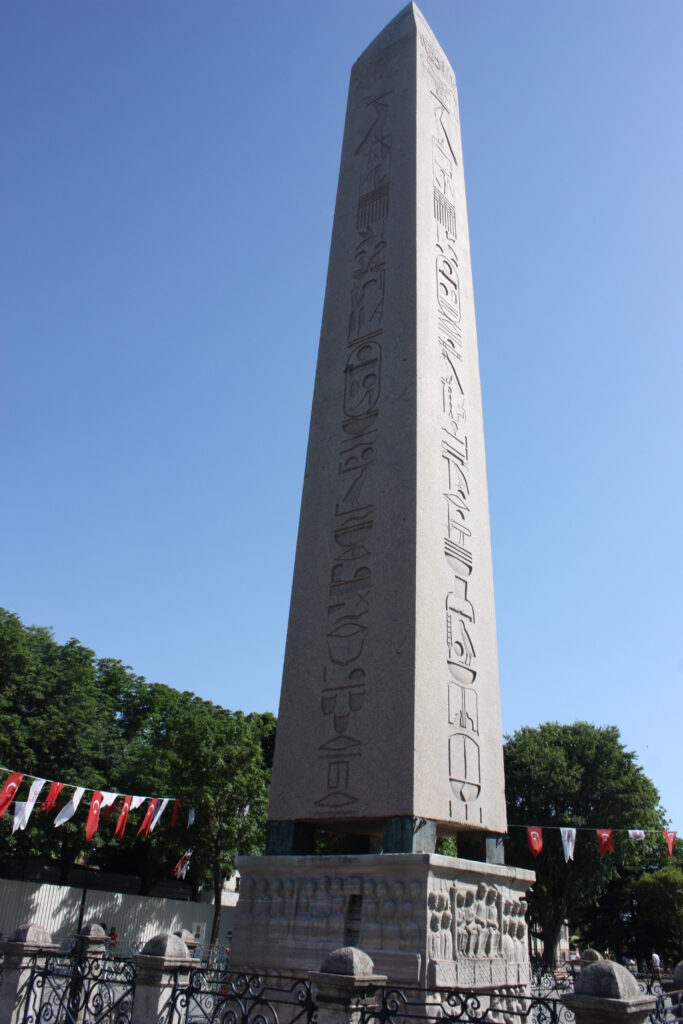
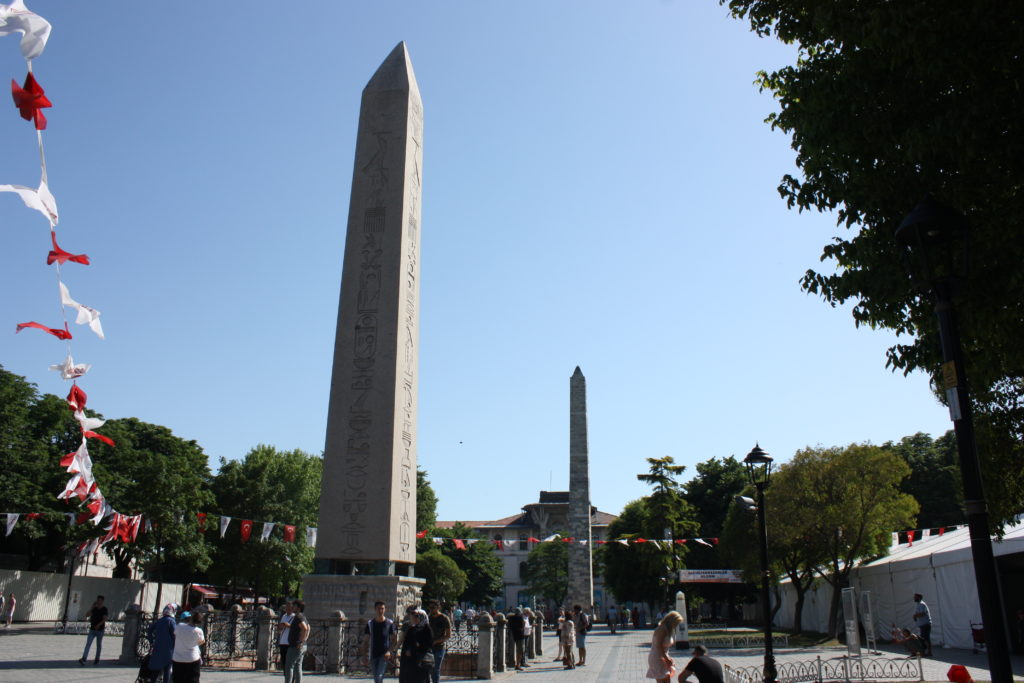

Çemberlitaş
Oldest Structures and World’s Firsts
Perhaps one of the oldest places to visit in Istanbul is the Maiden’s Tower. Dating back to ancient times, this tower was originally erected to control passing ships in the region. The structure has been destroyed and later restored by Ottoman sultans. Many stories have been told about it. There is an entrance fee to the Maiden’s Tower, and there are commercial establishments such as cafes and restaurants inside. However, you may prefer to sit on benches directly across and enjoy the view of the Bosphorus.
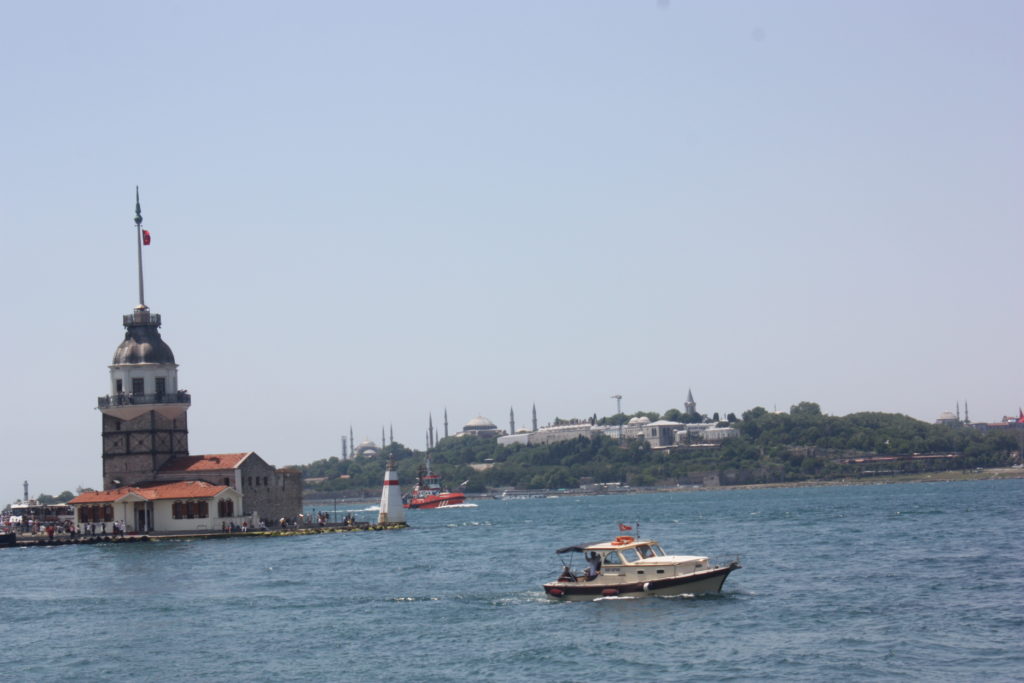
One of the historical towers is the famous Galata Tower. Be prepared to wait in line for quite some time to enter.

Historical Churches (chronologically)
The oldest known church and one of the oldest places to visit in Istanbul in Istanbul is the Church of the Holy Apostles, built in the 330s AD. According to legend, the tombs of 12 or 13 apostles were located in this church. This church was destroyed during the Byzantine period long before Ottoman Istanbul. However, interestingly, the Ottoman sultans did everything to respect the city’s structure. Fatih Sultan Mehmet had the Fatih Mosque built where the ruins of the Church of the Holy Apostles were located, before the Ottomans entered Istanbul. So when you visit the Fatih Mosque, know that it was the site of the first place of worship built in Istanbul. According to another legend, the tombs of the apostles are still beneath the Fatih Mosque.
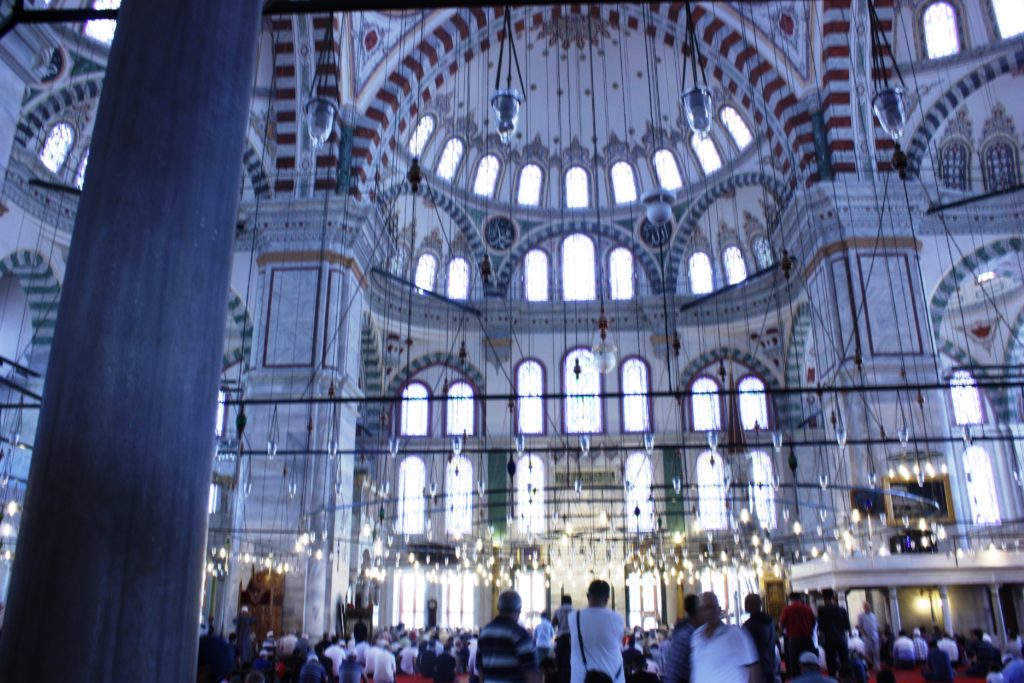
Fatih Mosque
The second church built and one of the places to visit in Istanbul is Hagia Irene. However, it is worth mentioning that the current structure is not the original one, as it was completely destroyed by earthquakes and later rebuilt. It is one of the few churches from ancient times that has not been converted into a mosque.
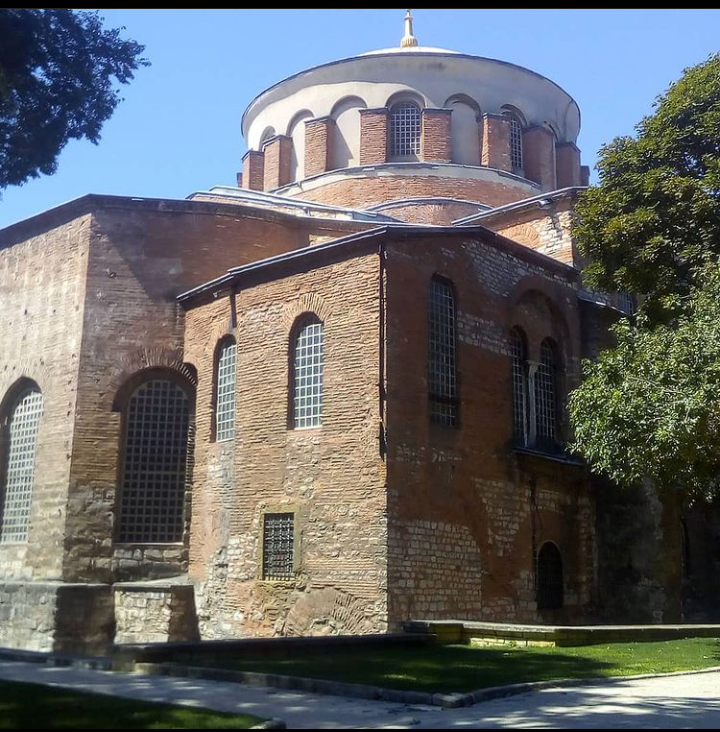
Hagia Irene
The Monastery of Studios is the third church built in Istanbul. It was later converted into a mosque and named İmrahor Mosque. Although partially destroyed, there are still remnants of this mosque. It is the oldest place of worship places to visit in Istanbul, but only a small part is visible due to the walls surrounding it. There is no entry inside. Uşakki Mosque is located on the main street. After finding this mosque, we need to enter the back alley.
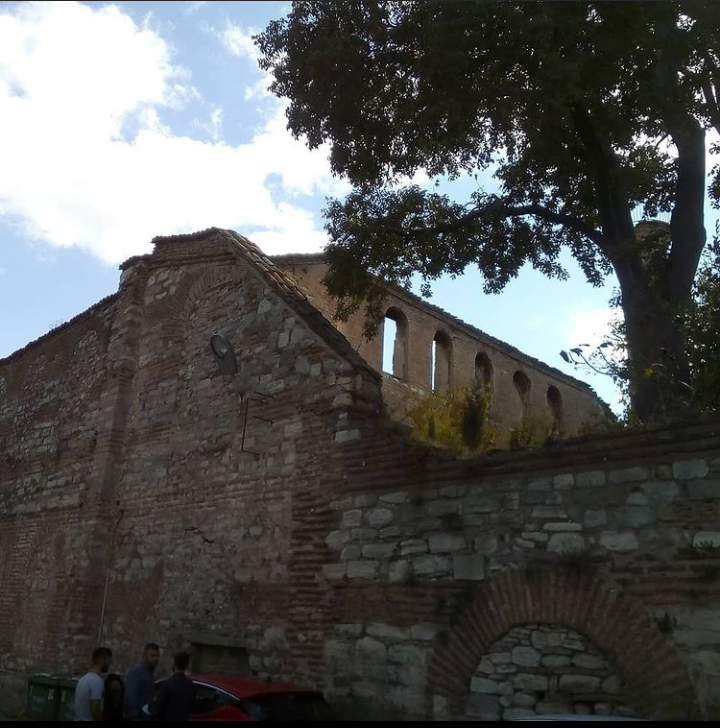
İmrahor İlyas Bey Mosque
I would like to mention the remains of a church discovered in the 1960s. These remains are now located in the Sarachane Archaeological Park. It is called the Church of Saint Polyeuctus and chronologically falls into this period.

Churches to Mosques
The fourth church is the Little Hagia Sophia, and the fifth church is the most famous church, Hagia Sophia. Converted into a mosque during the reign of Fatih Sultan Mehmet, only one minaret was built. Three more minarets were added in later periods. Hagia Sophia was converted back into a mosque recently after being a museum during the Republican era.
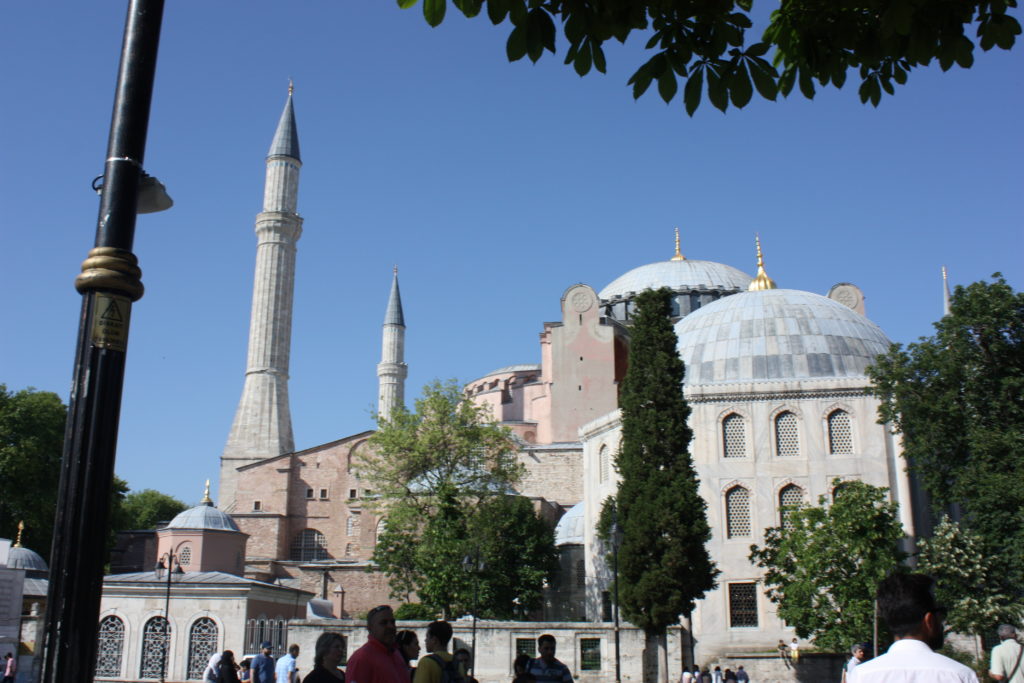
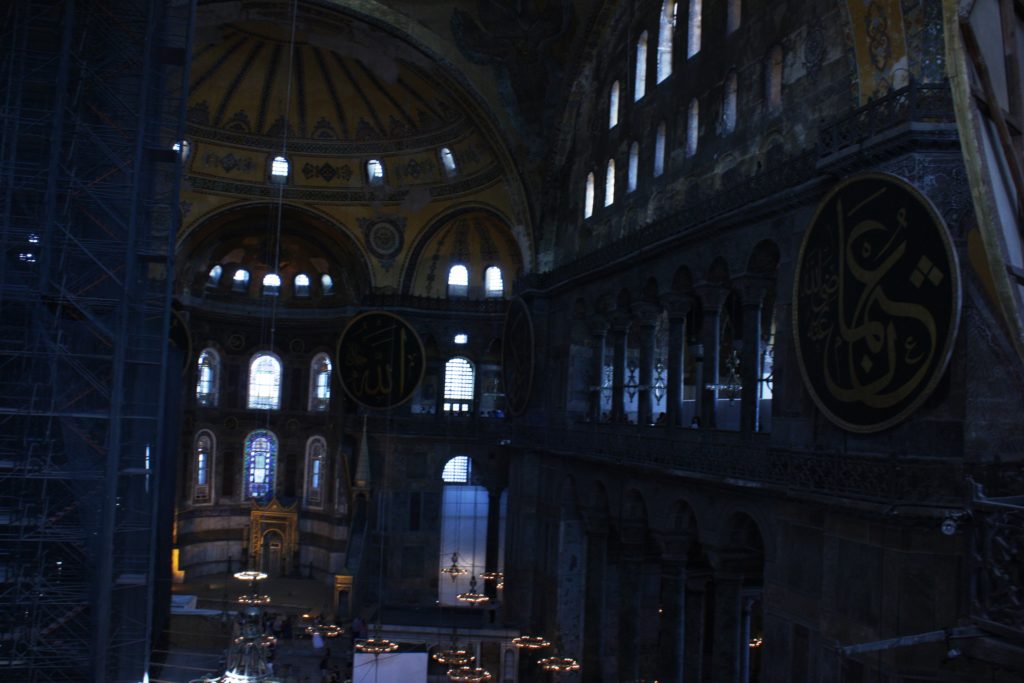
Hagia Sophia
After Hagia Sophia, the major churches from the Byzantine period in chronological order are Fenari Isa Mosque, Bodrum Mosque, Old Imaret Mosque, Gül Mosque, Molla Zeyrek Mosque, Kalenderhane Mosque, Kanlı Church, Fethiye Mosque, and Chora Mosque. Most of these churches were converted into mosques after the Ottoman period. I wrote them with their mosque names, but their original names were different. Some of them, like the Chora Museum, were converted into museums during the Republican era. As far as I know, only Kanlı Church has not been converted into a mosque. Kanlı Church was built for a princess named Maria, daughter of a Byzantine emperor, who was married to a Mongol ruler. Although the church is closed to the public, it seems to be used as a school. It is a majestic and bright red building in Balat. You need to climb a steep slope to see it up close.

Bodrum Mosque

Old Imaret Mosque

Gül Mosque under renovation
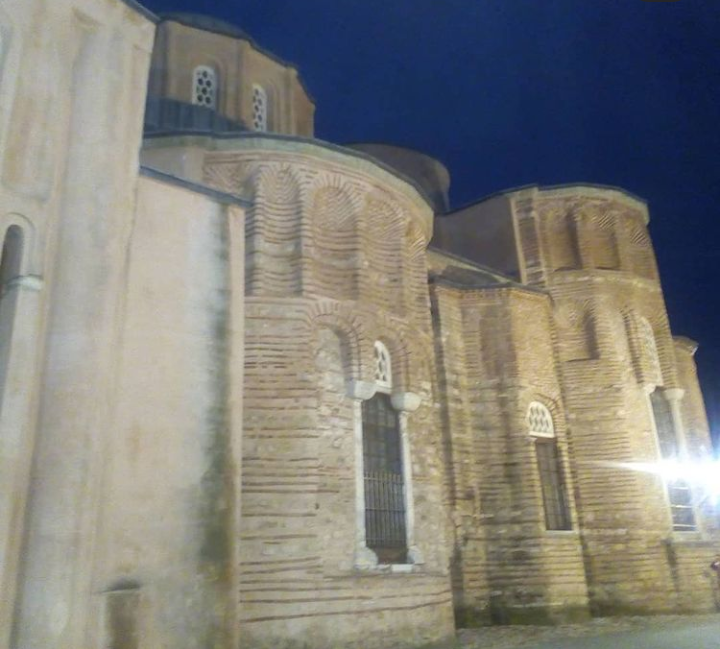
Molla Zeyrek Mosque
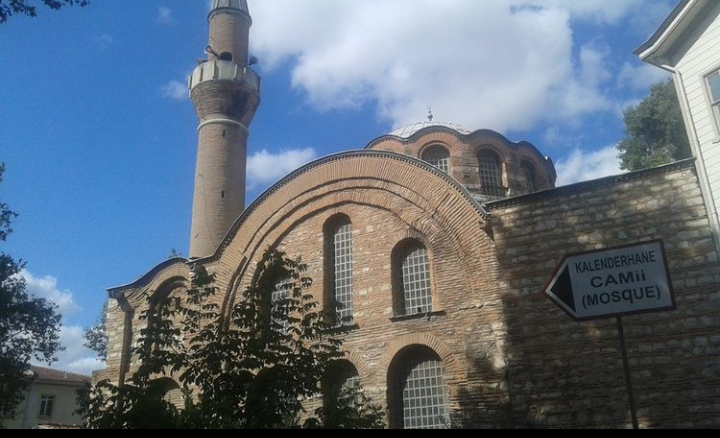
Kalenderhane Mosque
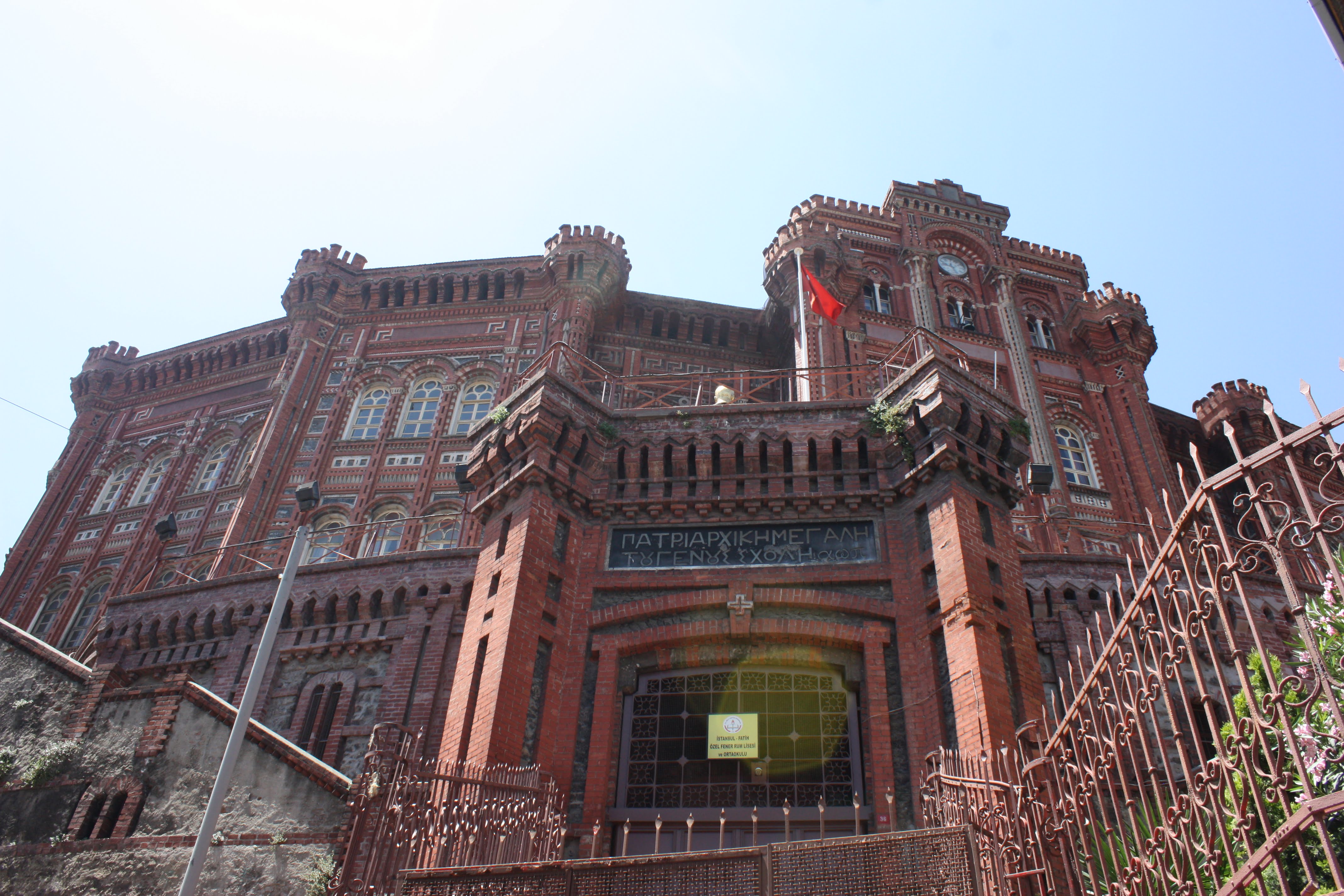
Kanlı Church
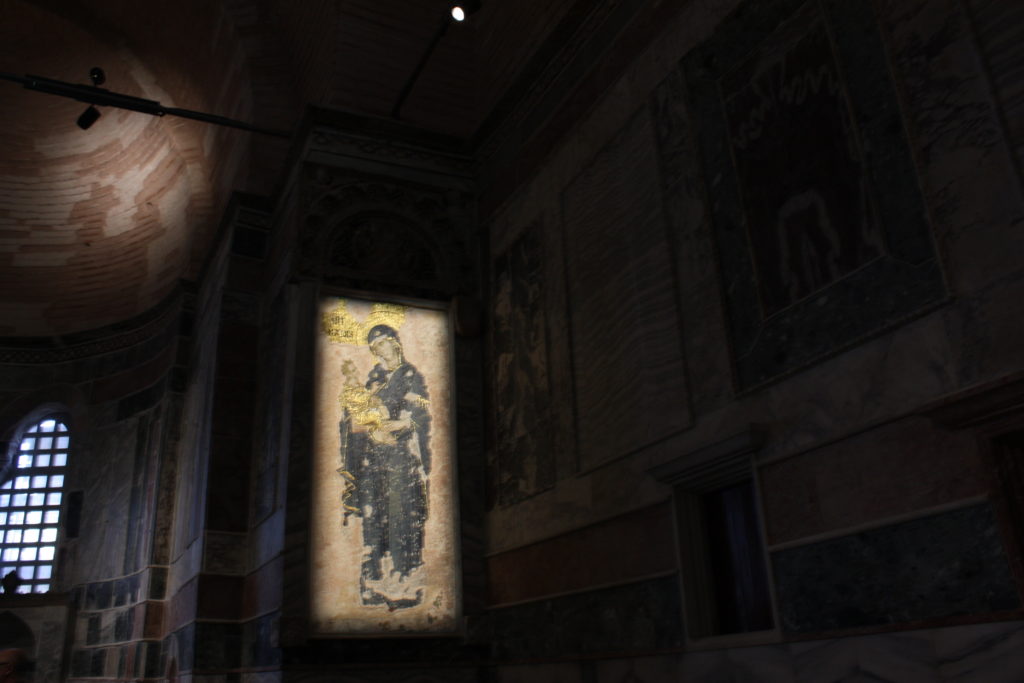
Since the Chora Museum is under renovation, I could only take photos inside.
Historical Water Structures
There are many Byzantine water structures remaining in Istanbul. These include the Valens Aqueduct, Basilica Cistern, Binbirdirek Cistern, and Şerefiye Cistern. Although the most famous of these is the Basilica Cistern, entry to the Şerefiye Cistern is free. The Ottomans did not use these cisterns because they preferred static water distribution.

Basilica Cistern
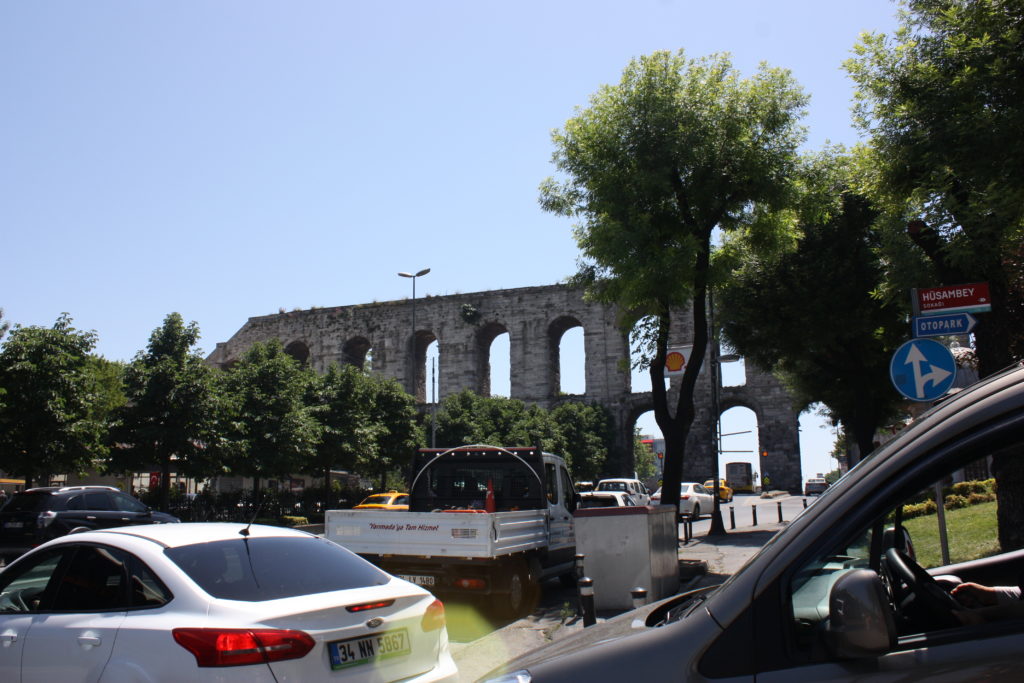
Valens Aqueduct
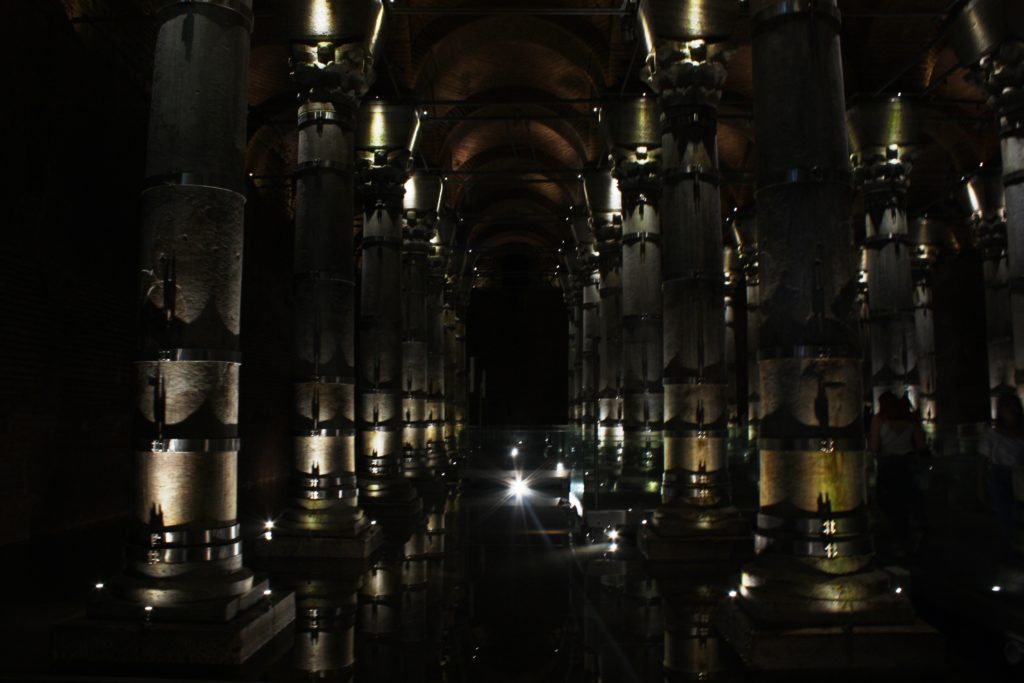
Şerefiye Cistern
Water distribution was done from here during the Ottoman period. The name “Taksim,” which means distribution, was given here for this reason.
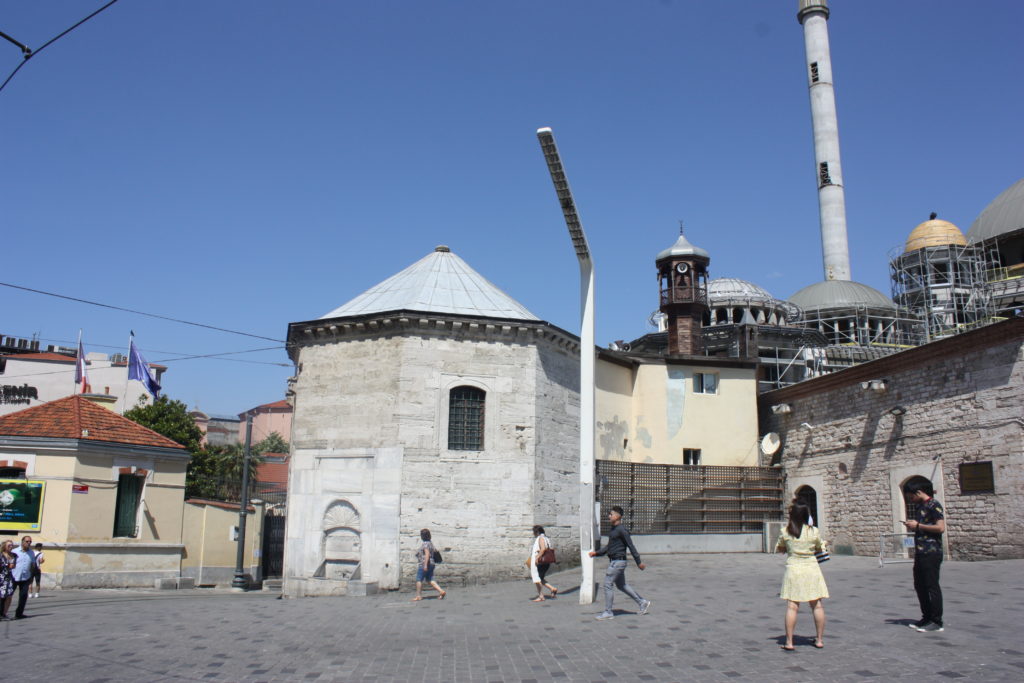
Other Roman Remainings
The walls of Istanbul can be seen from many parts of the city. There is also the Gate of Charisius at Edirnekapı, where Fatih Sultan Mehmet first entered.
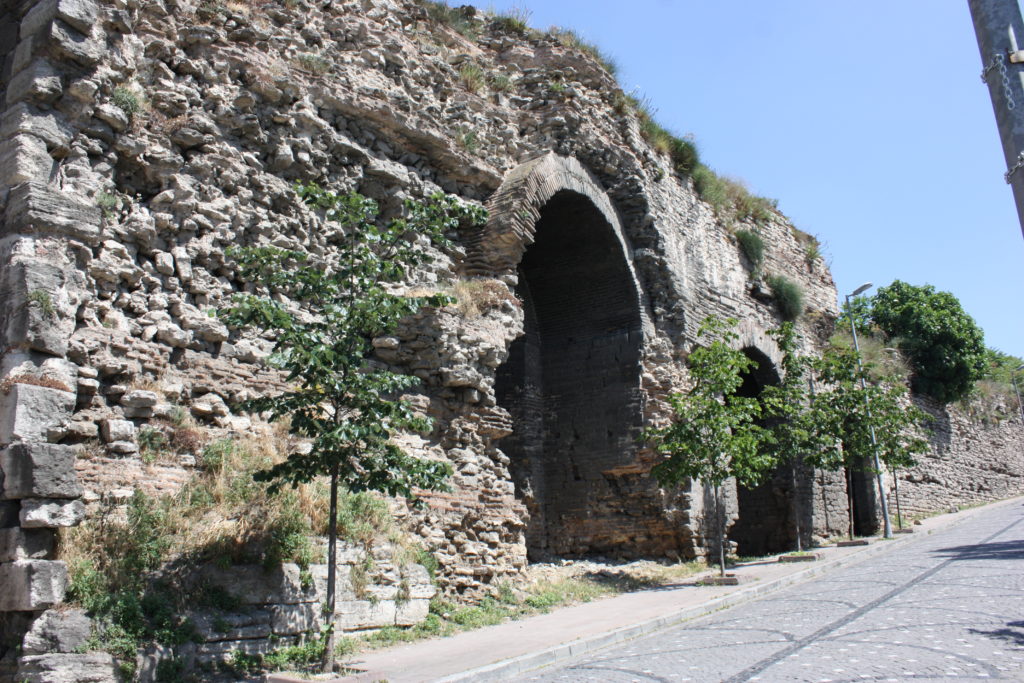
There are also palaces to visit in Istanbul dating back to the Byzantine period. The most famous of these is the structure known as the Great Palace. This palace was destroyed during the Byzantine period before the Ottomans, and the Great Palace Mosaics Museum contains large mosaics and old sketches from inside the palace. The Great Palace was a complex including the Hippodrome and other palace extensions. Only a part of the Hippodrome wall and the columns that were once in the center of the Hippodrome remain. Just opposite the ruins of the Hippodrome, there are also the remains of a bathhouse from the Byzantine period.
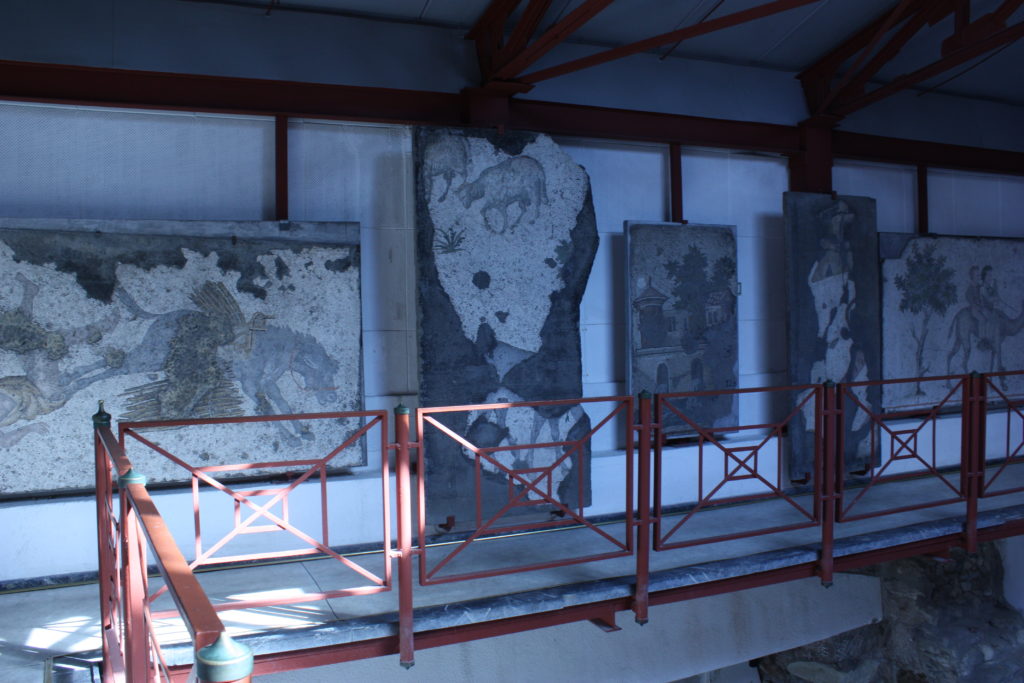
Great Palace Mosaics Museum

Hippodrome Ruin
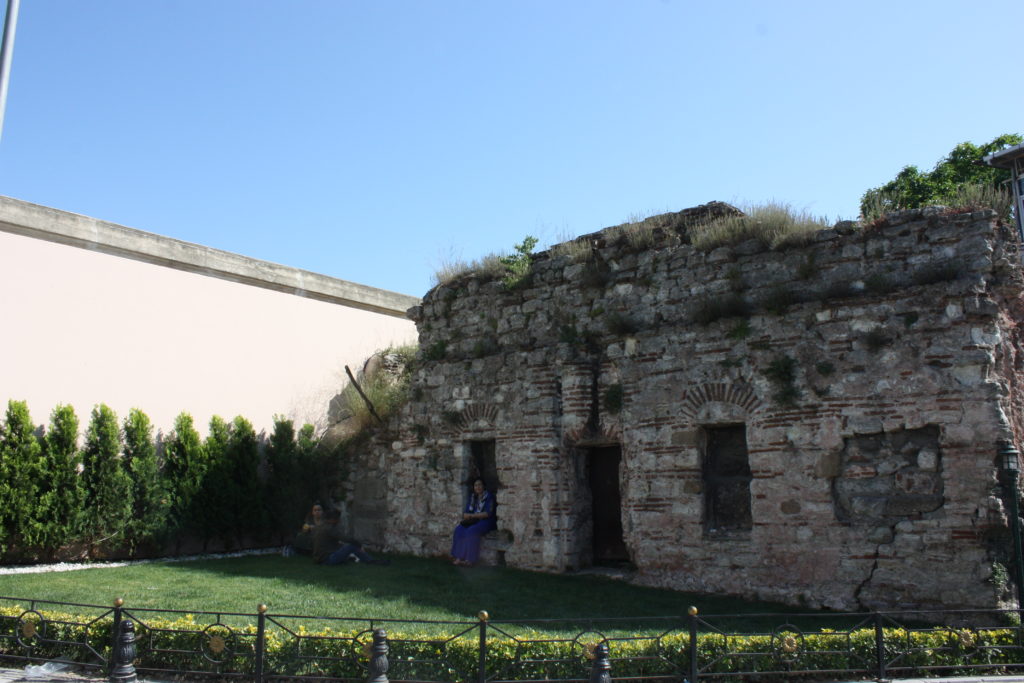
Arasta Bathhouse
Palaces and Castles
What was once known as the horse square in the Ottoman era is now called Sultan Ahmet Square. Within the Great Palace complex, there are other palaces named Bukhaleon and Antiochus Palaces. The structure seen when going to Cankurtaran is the remains of the Bukhaleon Palace. If you look carefully in Mehmet Akif Ersoy Park on the tramway route just above Sultan Ahmet, you can see the remains of the Antiochus Palace. Apart from these two palaces, the Hagia Sophia
Hagia Irene, and Hippodrome were also located within this large palace complex. Again, Fatih Sultan Mehmet, who did not want to disrupt the city’s structure, had the Topkapi Palace built where the Great Palace was located. Of course, before the conquest, this palace had already been abandoned, and the emperors had moved to the peripheral palaces. Although the Topkapi Palace was much smaller when it was first built, even its current state was much smaller than the old Great Palace.
The Tekfur Palace at Edirnekapı could be an extension of the much larger complex, the Blachernae Palace, according to some sources. It is possible to see the wall remnants of the Blachernae Palace in the vicinity. As the center became crowded, the emperors migrated to these peripheral palaces. The complex in the middle of Ayvansaray is also the Blachernae Palace. Over time, it was called Ayvansaray because the Ottomans used it to keep animals. There are also the Anemas Dungeons that I missed here. But I encountered a few drunk people around here. One must be careful. While we’re at it, the Yedikule Dungeons are also near the walls, but you can’t enter them.
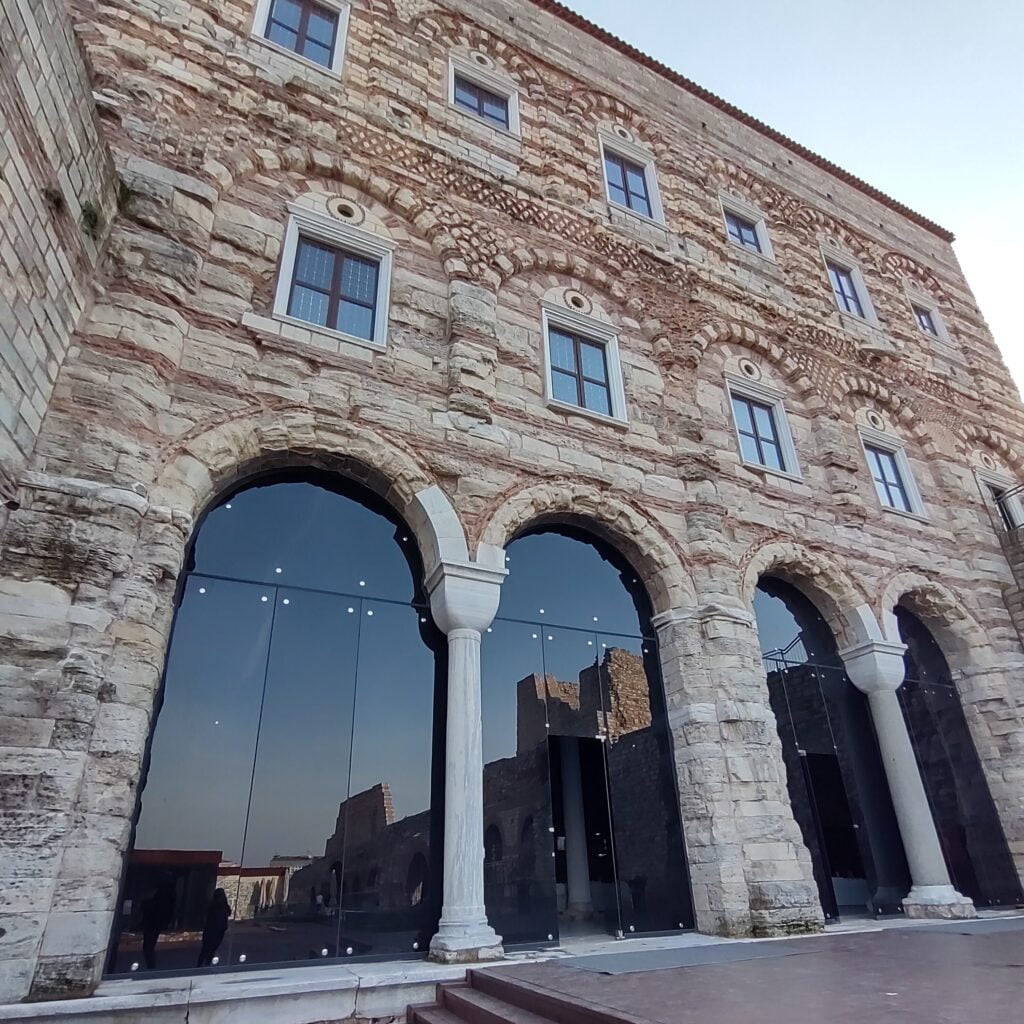
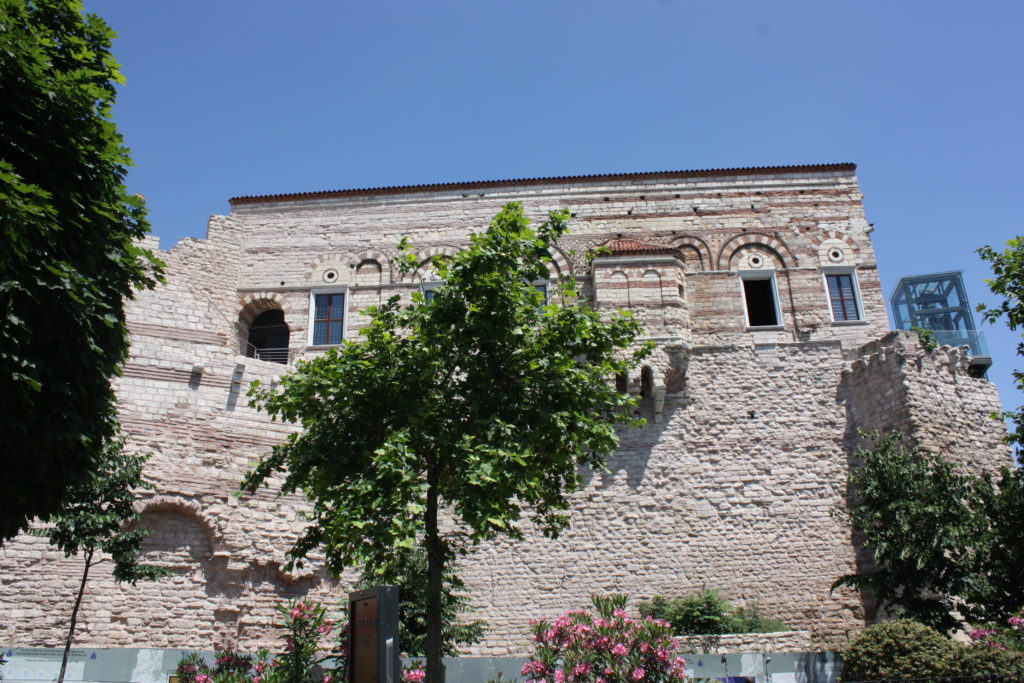
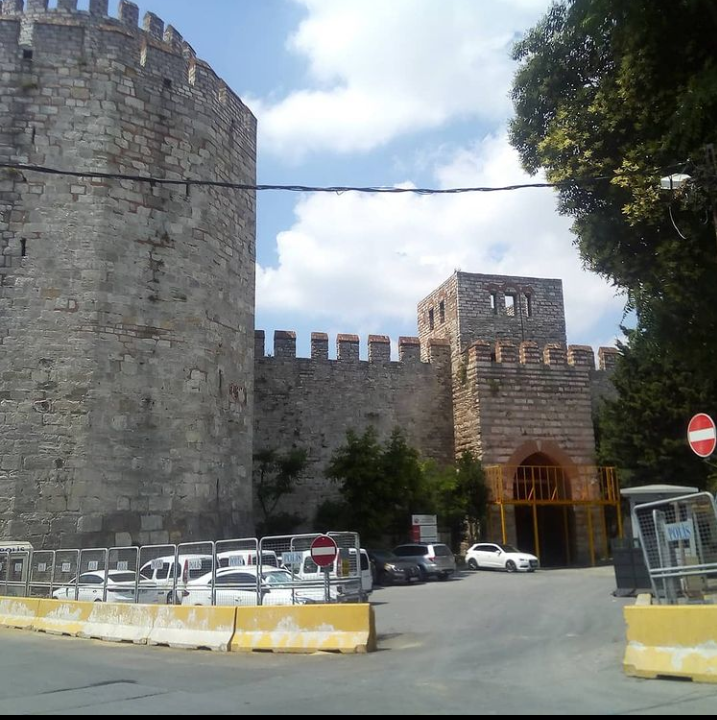
Ottoman Remainings
These are the architectural structures I know from before the Ottoman period. For Ottoman-era structures, I’ll copy from my previous writing. In my previous writing, I talked about architectural structures built not only in Istanbul during the Ottoman period but also in other cities.
I want to add one thing. The first mosque built in Istanbul is the Eyüp Mosque. However, since both the Eyüp and Fatih Mosques were destroyed in earthquakes and rebuilt, the oldest mosque that has actually reached our day is the Bayezid Mosque.
Fatih Sultan Mehmet had the Rumeli Fortress built opposite the Anatolian Fortress commissioned by Yıldırım Bayezid to conquer Istanbul.
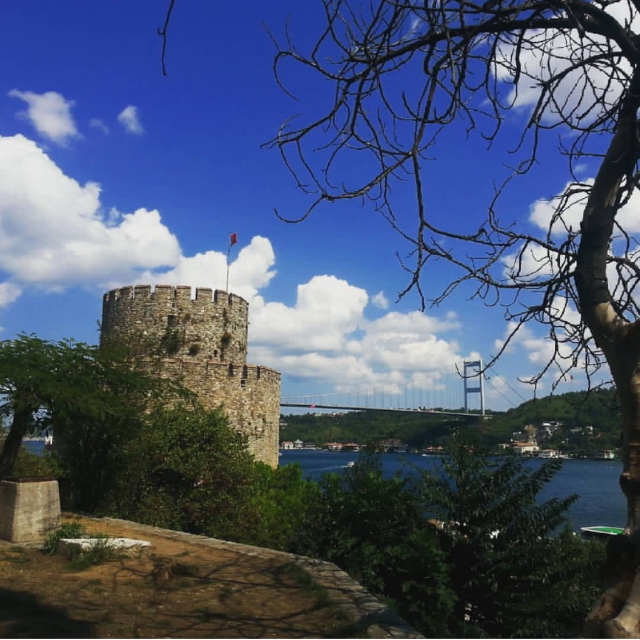
Otoman structure (Peak period)
Fatih Sultan Mehmet had a mosque built in honor of Eyüp Sultan, one of the first Muslims to besiege Istanbul. Additionally, he commissioned the construction of the Fatih Mosque complex. His tomb is also located there. The mosque suffered significant damage in the 1509 earthquake. It was reconstructed but sustained damage from subsequent earthquakes and was repaired. The Grand Bazaar was built during this period as well.



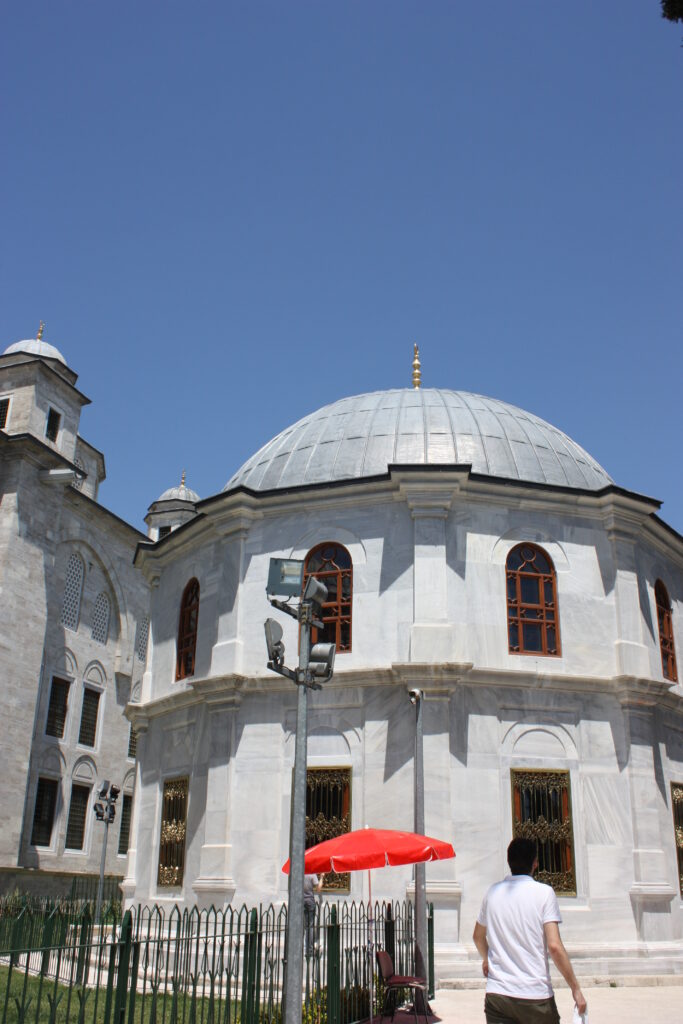

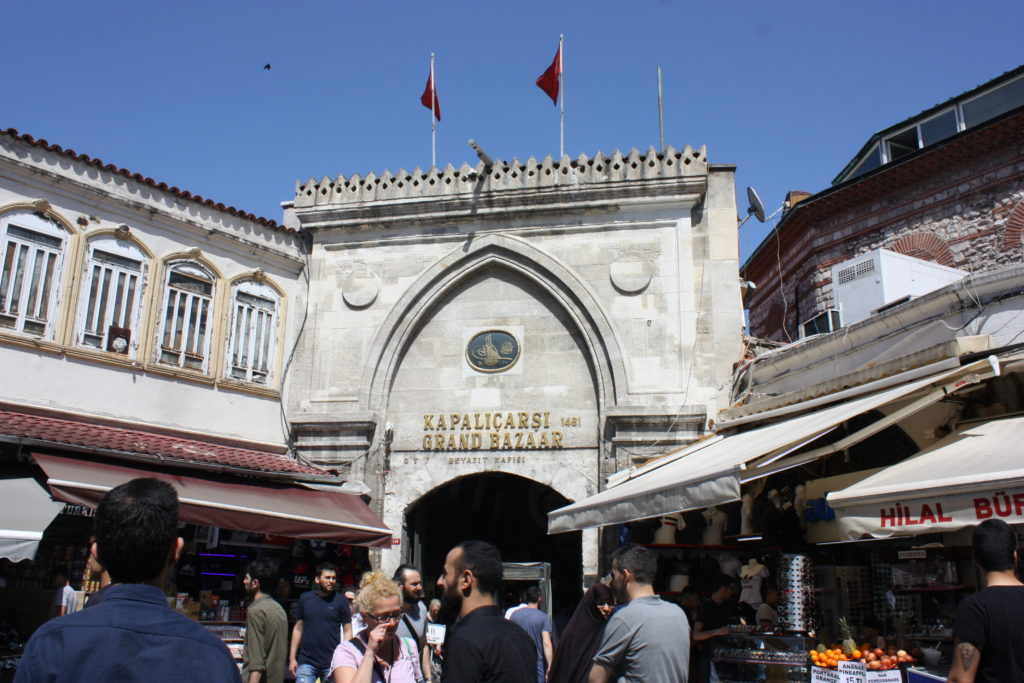

Fatih also initiated the construction of the Topkapı Palace, which became the longest-used palace in Istanbul.

In front of the gate of Topkapı Palace is the fountain of Sultan Ahmed III. I didn’t take photos inside because photography is prohibited. The harem is accessible for a fee but worth visiting. It’s worth noting that the harem extension was built during the reign of Kanuni Sultan Süleyman.
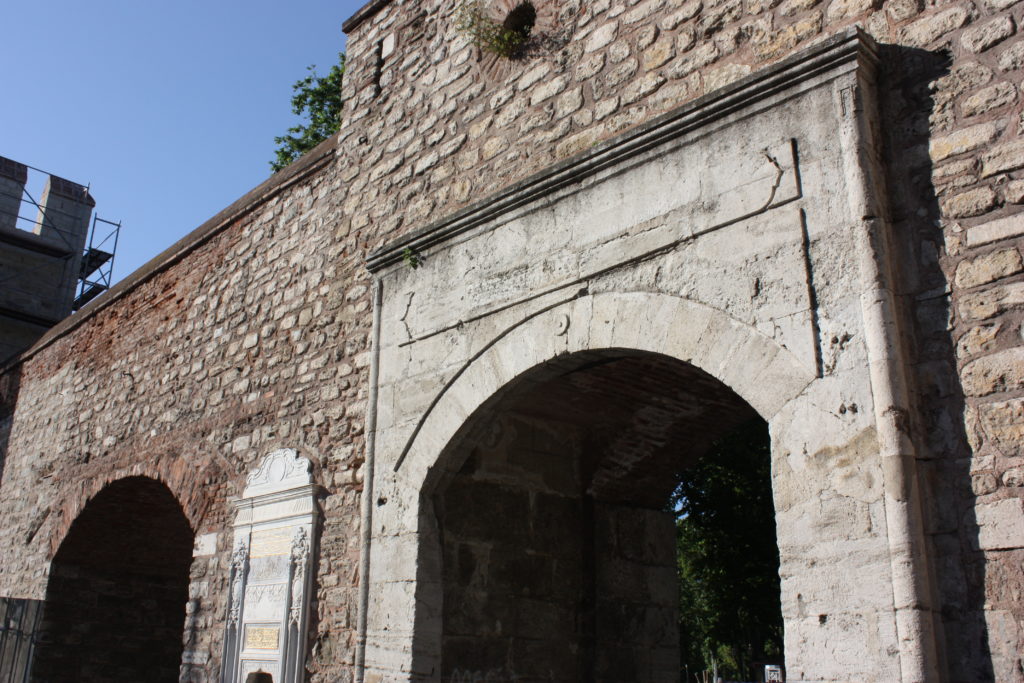

Otoman structure (Peak period)
Gülhane Park was originally part of the Topkapı Palace’s private gardens. Additionally, another palace was built during Fatih Sultan Mehmet’s reign for his family’s residence. As the harem was eventually moved to the Topkapı Palace, this place was renamed the Old Palace and became a place of exile. Today, the only remaining part of this palace, its gate, is used by Istanbul University.
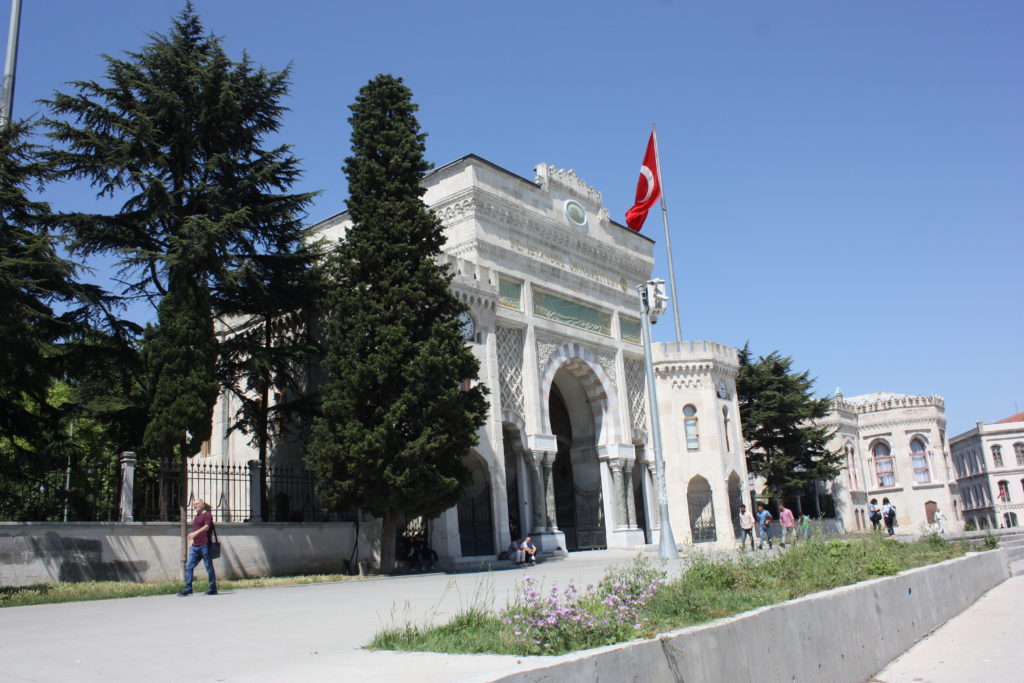
The Bayezid Mosque, named after Bayezid II, was constructed during his reign. His tomb is also located there. The mosque was damaged in the 1509 earthquake and repaired. The unfortunate sultan had to rebuild all of Istanbul after the 1509 earthquake.
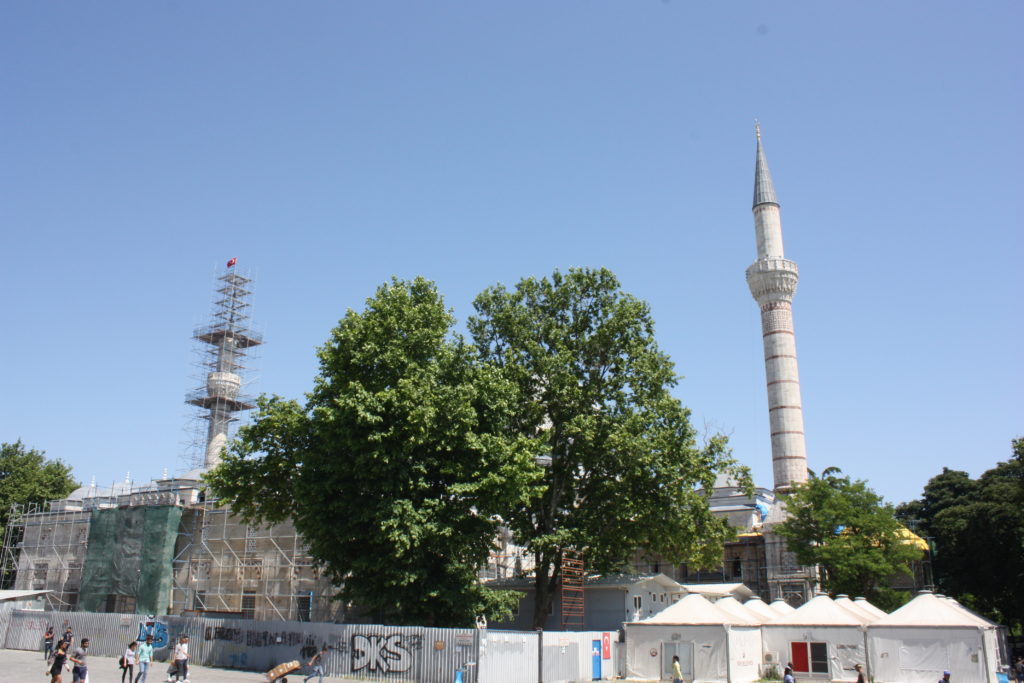
The Atik Ali Paşa Mosque in Çemberlitaş is also one of the structures from this period.

The Davut Paşa Palace was built by Bayezid II. It is located outside the city walls, and only one building remains today. Currently, this building, known as the Davut Paşa Pavilion, is located on the campus of Marmara University. It is said to have been built for the daughter of Hançerli Sultan Yalı, Fatma Sultan. Previously known as Atmeydanı, the palace was later renamed Ibrahim Paşa Palace. It was said to have been more magnificent than the Topkapı Palace during its time. Ibrahim Paşa, who married Hatice Sultan, the sister of Kanuni Sultan Süleyman, first lived here. It is believed that this building was built during Bayezid II’s reign. It is currently used as the Museum of Islamic Art. There are remains of a hippodrome beneath the building.


Yavuz Sultan Selim Mosque was initiated by Yavuz Sultan Selim and completed by his son, Kanuni Sultan Süleyman. His tomb is located there. Yavuz Sultan Selim initiated the addition of the Sacred Relics extension to the Topkapı Palace.
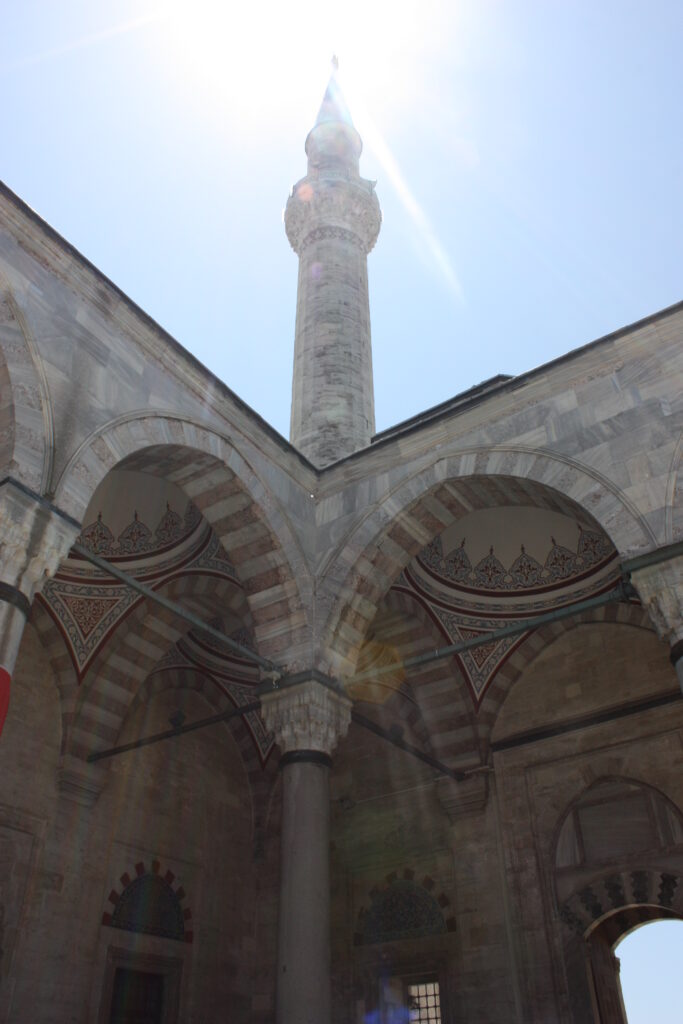
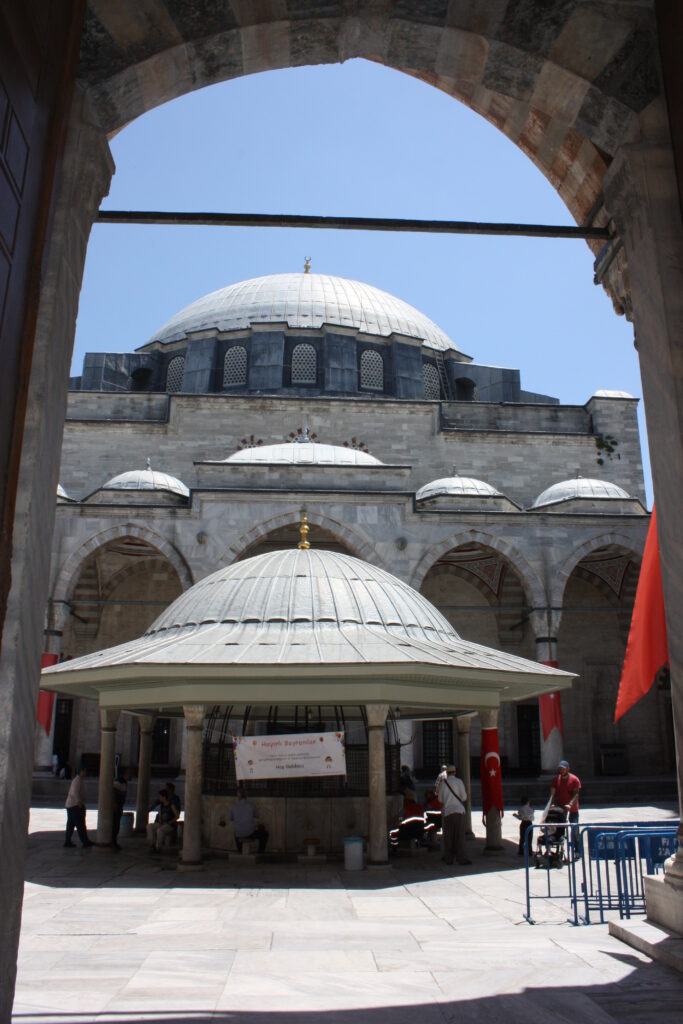
Otoman structure (Peak period)
Under Kanuni Sultan Süleyman’s reign, Ottoman architecture experienced its golden age, coinciding with the era of the architect Mimar Sinan. Due to a fire at the Old Palace during this period, the harem was moved to the Topkapı Palace, leading to expansions there. Since Gülhane Park was also part of the Topkapı Palace’s private gardens, it can be visited today. The current location of the Istanbul Archaeology Museum was also within the Topkapı Palace.
The first works commissioned to Mimar Sinan by Hürrem Sultan were the Hürrem Sultan Bath, Haseki Mosque, and Haseki Complex, which are now located between Ayasofya and Sultan Ahmet Mosque.
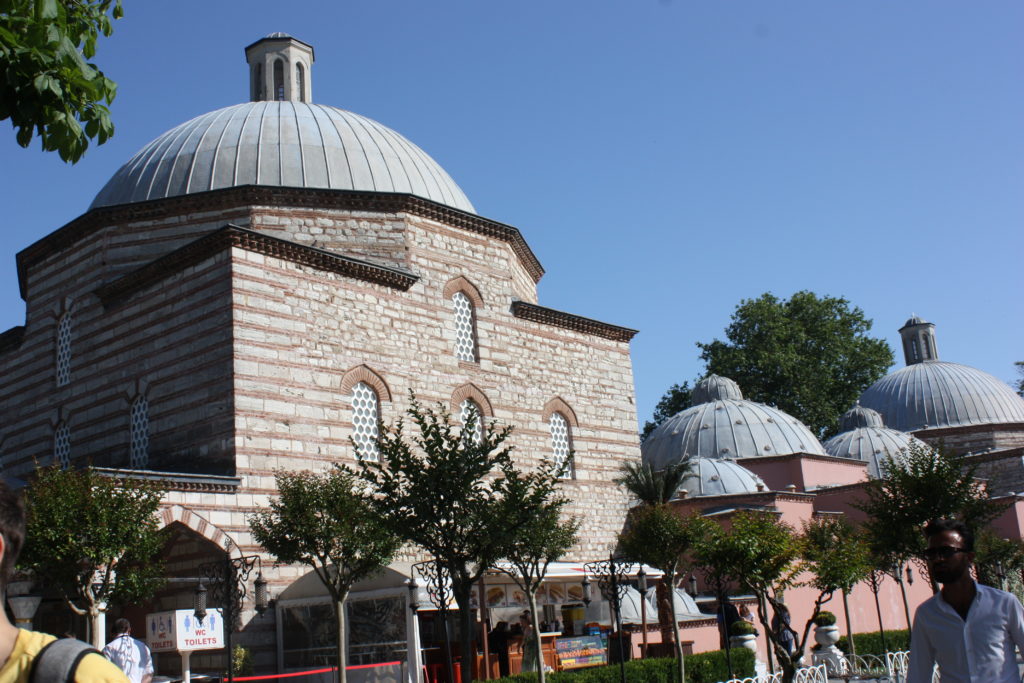
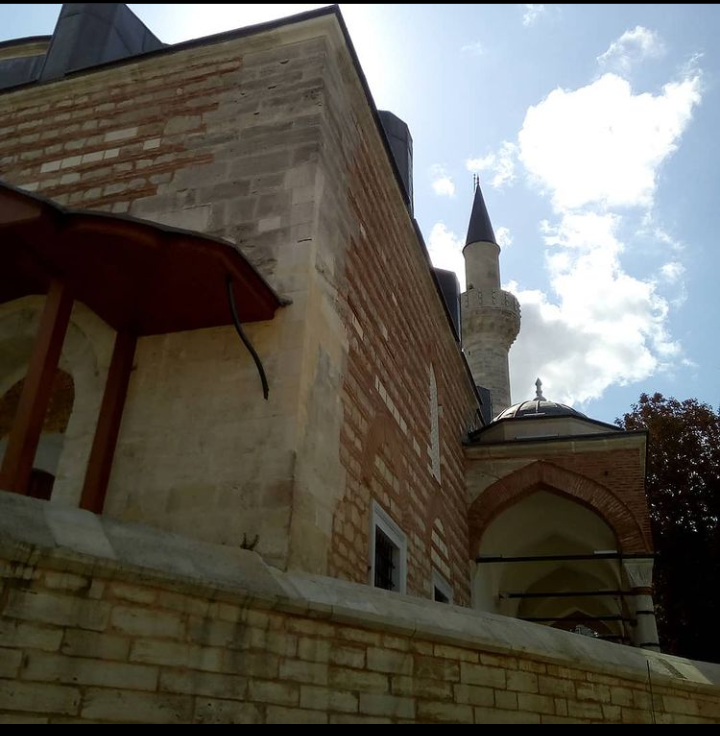
Mimar Sinan’s Works
Kanuni Sultan Süleyman commissioned the Şehzade Mosque in memory of his son Şehzade Mehmet, who died while he was the governor of Manisa. This work is referred to as the apprenticeship work of Mimar Sinan.
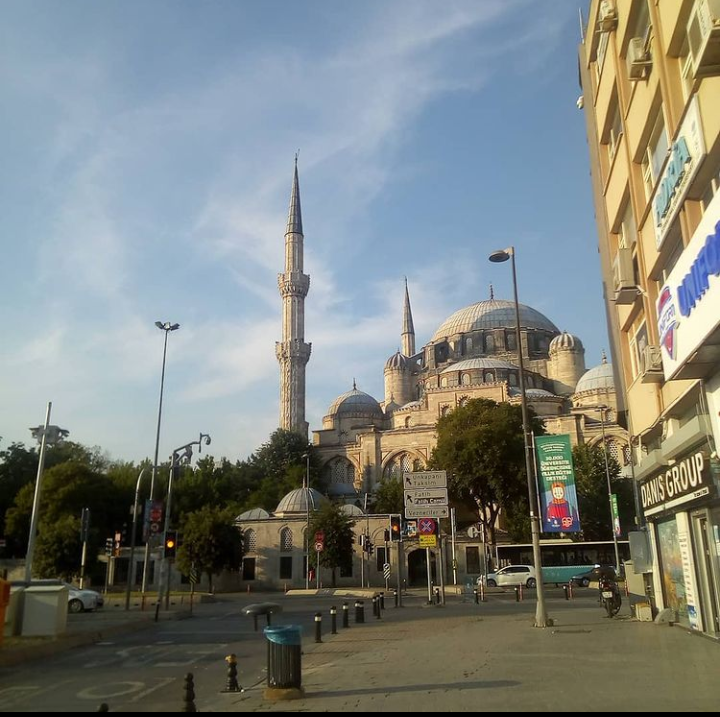
Subsequently, the Mihrimah Sultan Mosque in Edirnekapı was built for Sultan Mihrimah, the daughter of Kanuni Sultan Süleyman.
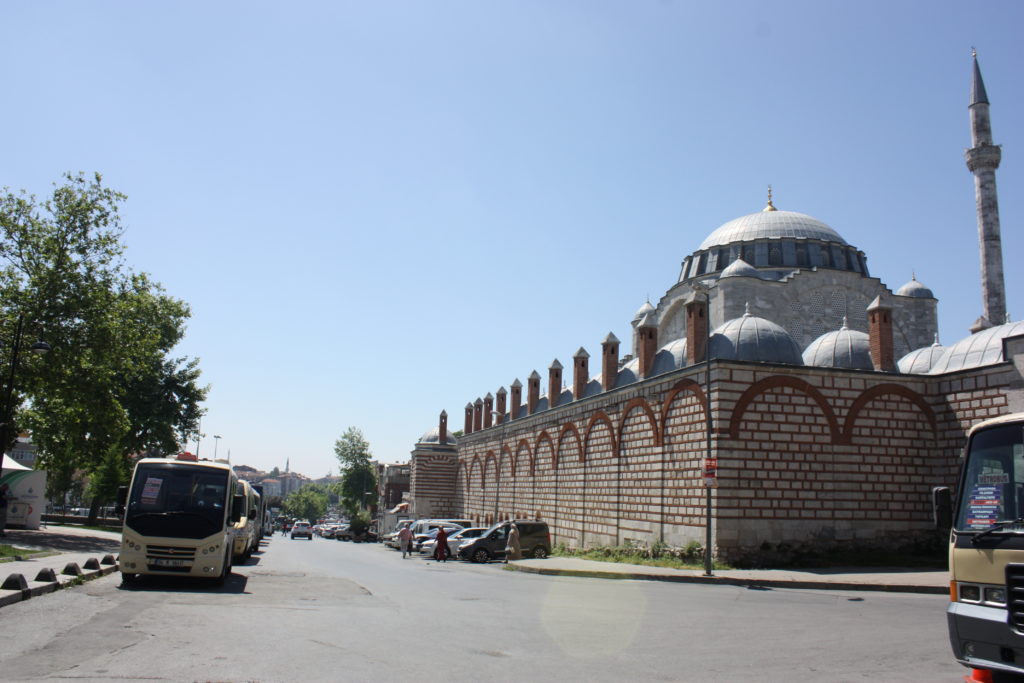
The Süleymaniye Mosque, built by Mimar Sinan, is considered one of the most magnificent mosques and one of the most beautiful places to visit in Istanbul. His tomb is also located there.
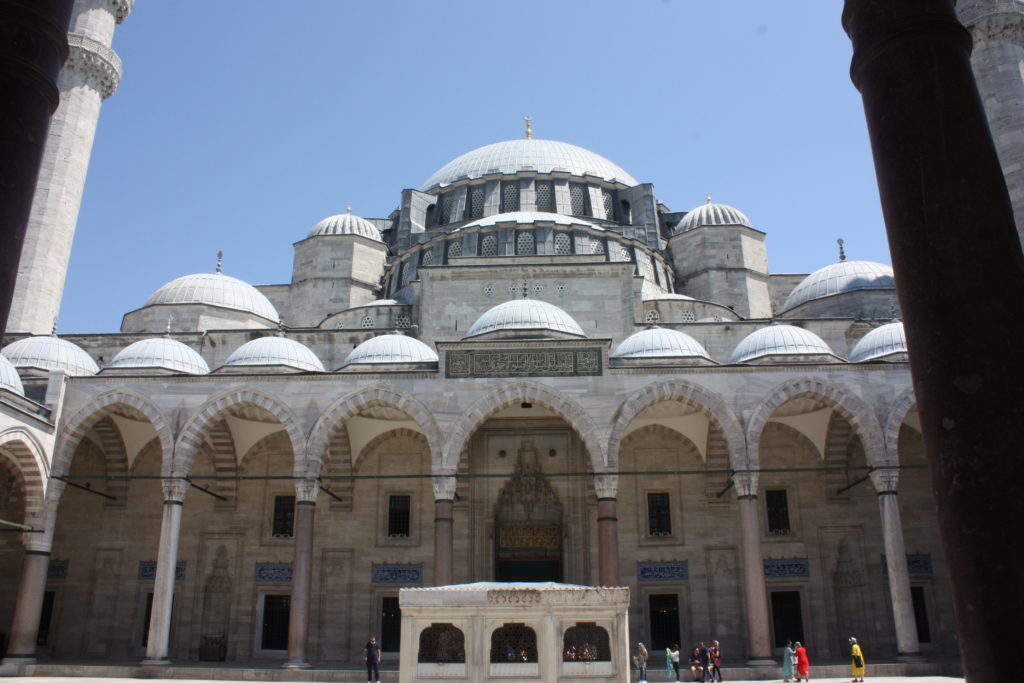

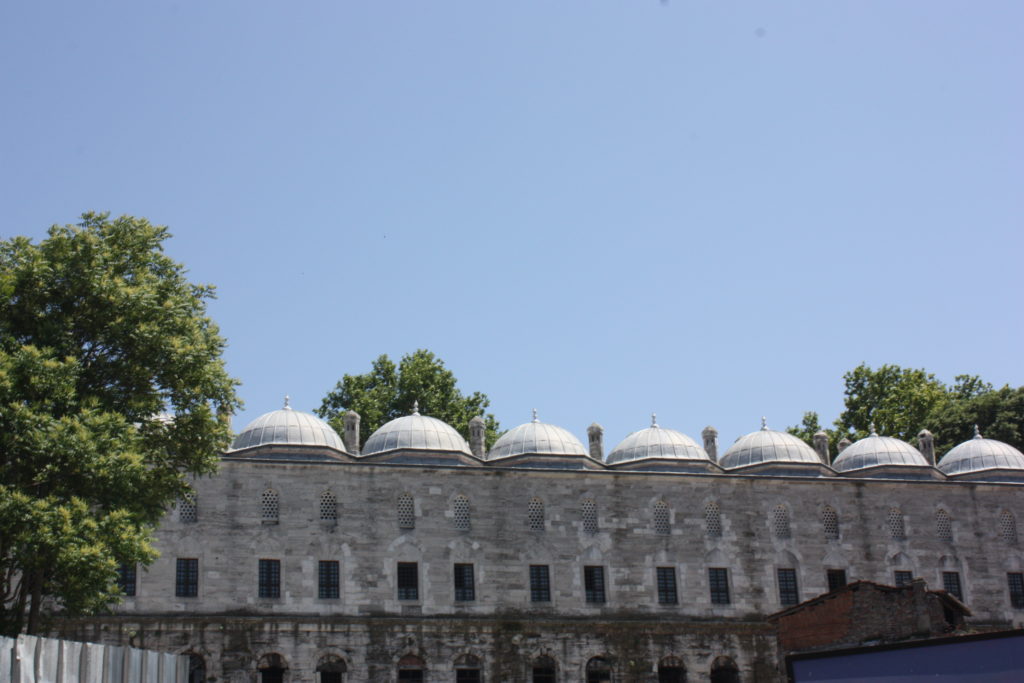
Kanuni Sultan Süleyman also built a mosque in memory of his son Cihangir, who died in the famous incident involving Mustafa, the heir apparent. Later, he built the Mihrimah Sultan Mosque in Üsküdar for his daughter Mihrimah Sultan. Since Üsküdar was considered the starting point for the pilgrimage, it was considered sacred at the time, and many sultans built structures there.
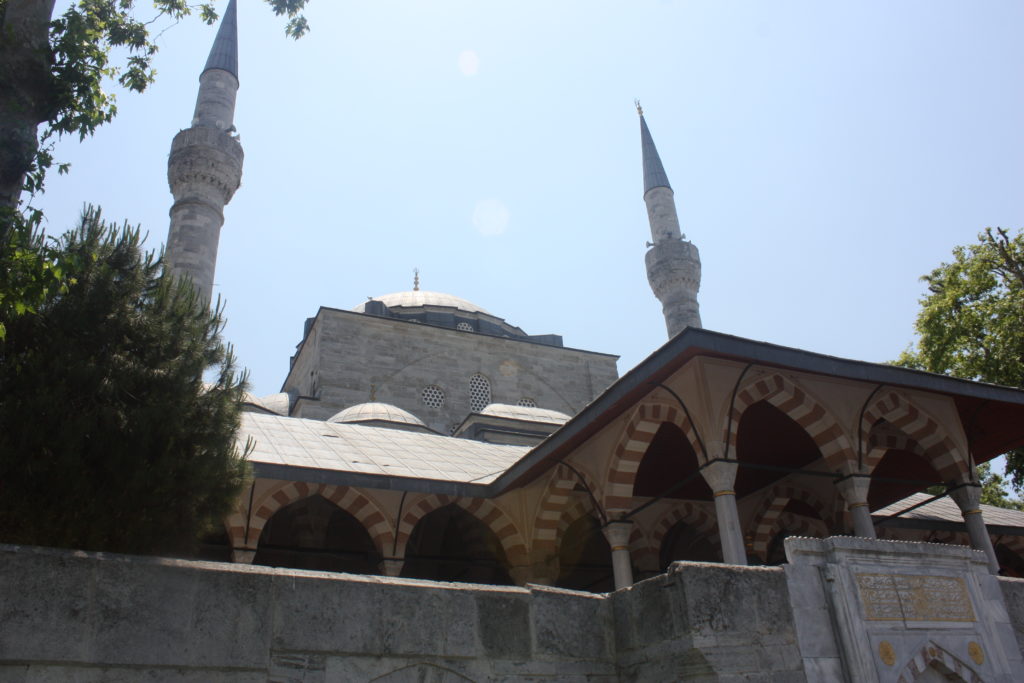
Rüstem Paşa, during his tenure as Grand Vizier, commissioned numerous mosques and buildings to Mimar Sinan. Sokullu Mehmet Paşa also commissioned a series of mosques and buildings. Additionally, many bridges were built during this time. For example, the Büyükçekmece Bridge was built during this period. The region is named after Mimar Sinan. There is even a small bridge built by Mimar Sinan in my neighborhood.
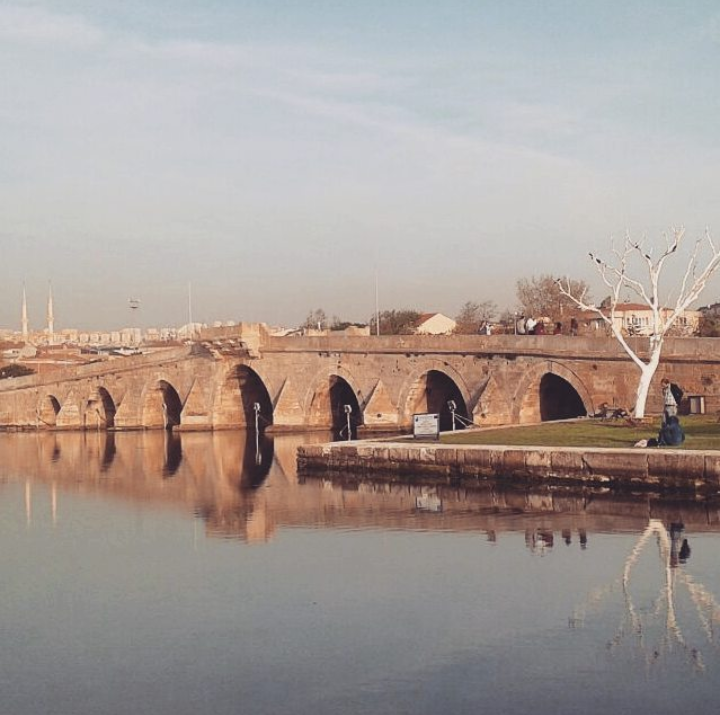
During this period, many palaces were also built. Additionally, during this period, Ibrahim Paşa built the Middle Mosque in the center of the Janissary barracks, where the Janissaries worshipped. A palace was built in Üsküdar. Mihrimah Sultan and her daughter Ayşe Sultan stayed there. Instead of the Istavroz Palace built during this period, the Beylerbeyi Palace was later built. Her sister, Şah Sultan, lived in the previously built Hançerli Sultan Yalı.
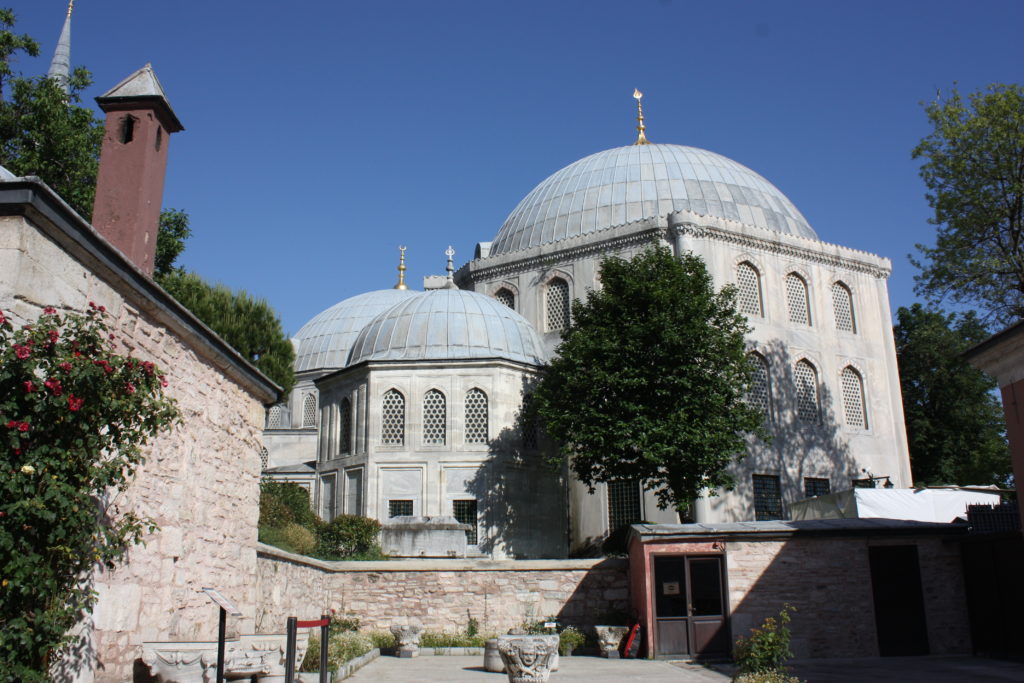
Ottoman Structures (Stagnation period)
Some of the tombs of the later sultans, such as 2nd Selim and others, are located here at Hagia Sophia.
In Üsküdar, there is an interesting structure, the Şemsi Paşa Mosque, almost in the sea, built by Mimar Sinan. It is said that Şemsi Paşa, who was married to Ayşe Sultan, Sadrazam Sokullu’s niece, lived here after his assassination. He was also said to be the grandson of one of Bayezid II’s daughters. However, given the different periods, there seems to be a significant age difference.
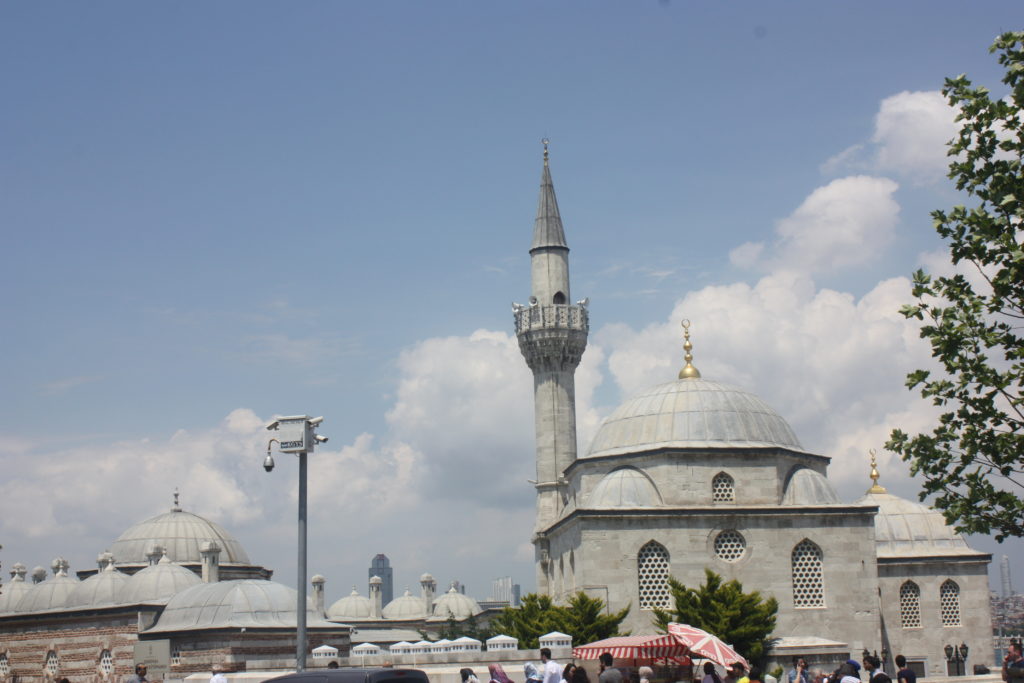
The Kılıç Ali Paşa Mosque, built by Mimar Sinan, was located across from Tophane, originally in the sea.
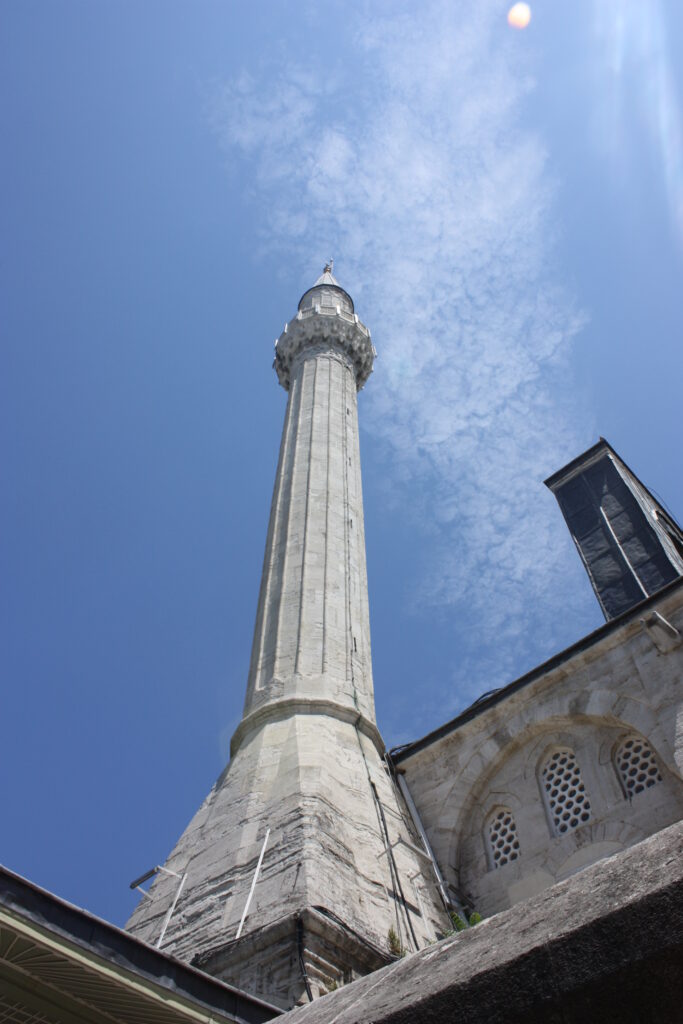
Ottoman Structures (Stagnation period)
Mimar Sinan’s last work is the Valide Sultan Mosque, built by Nurbanu Sultan in Uskudar. Later, other Valide Sultans also built mosques, so it is called the Old Valide Sultan Mosque.
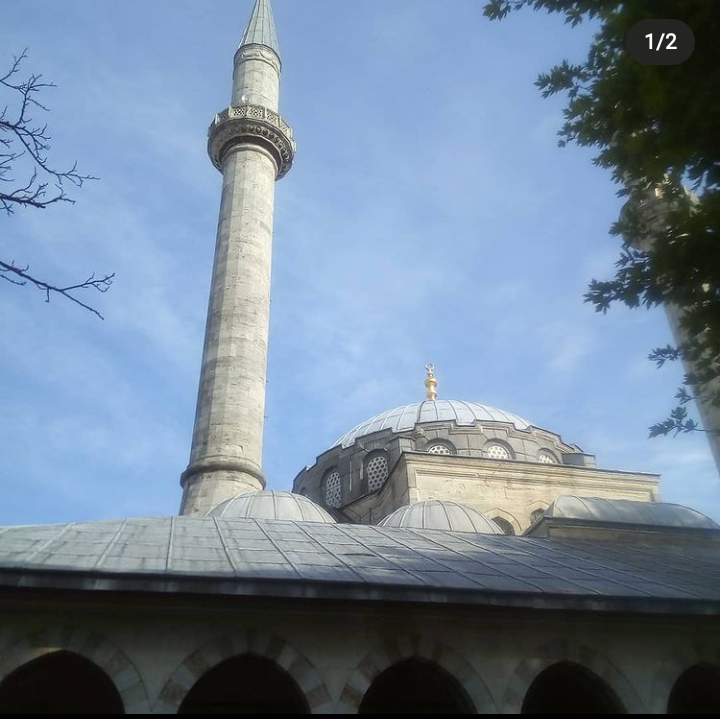
Additionally, during this period, the harem was permanently moved to the Topkapı Palace, so many structures were added there.
Ottoman Monuments (Stagnation Period)
During the reign of Mehmet III, the construction of the New Mosque (Yeni Camii) began, but the construction was left incomplete due to allegations of bribery. During the period of a plague outbreak, some sought refuge in the Davutpaşa Palace for a while.
During the reign of Ahmed I, the Old Palace officially became a place of exile. Since Ahmed I’s grandmother, Safiye Sultan, was still alive, and there was a new valide sultan, Safiye Sultan was exiled. He commissioned the construction of the famous Sultan Ahmed Mosque (Blue Mosque). It is said that Sultan Ahmed himself worked on the construction of the mosque. His tomb is located in front of the mosque.

The Sultan Ahmed Mosque is partially under restoration.
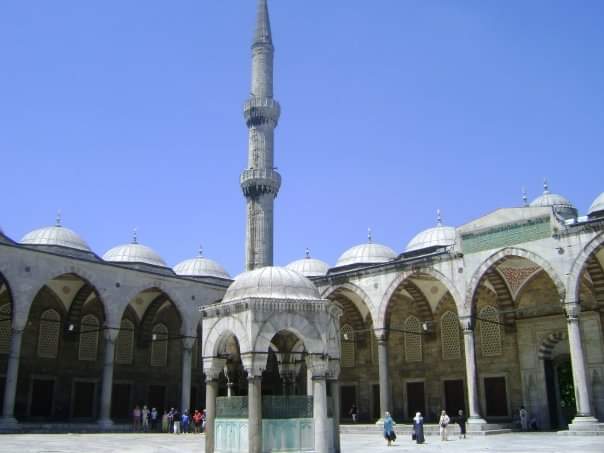

During the reign of Murad IV, the Baghdad and Revan pavilions were built in the Topkapı Palace in honor of the conquest of Baghdad.
Ottoman Monuments (Stagnation Period)
During the reign of Mehmed IV, visits to the Üsküdar Palace were frequent, and hunting parties were held at the Davut Paşa Palace. Construction of the Beşiktaş shore palace began during this period. Later, the Dolmabahçe Palace was built here. The construction of the Yeni Mosque, which was left unfinished during the reign of Mehmed III, was completed by Turhan Sultan, the mother of Mehmed IV, during this period. Additionally, the Hünkar Pavilion and the Egyptian Bazaar were built here.
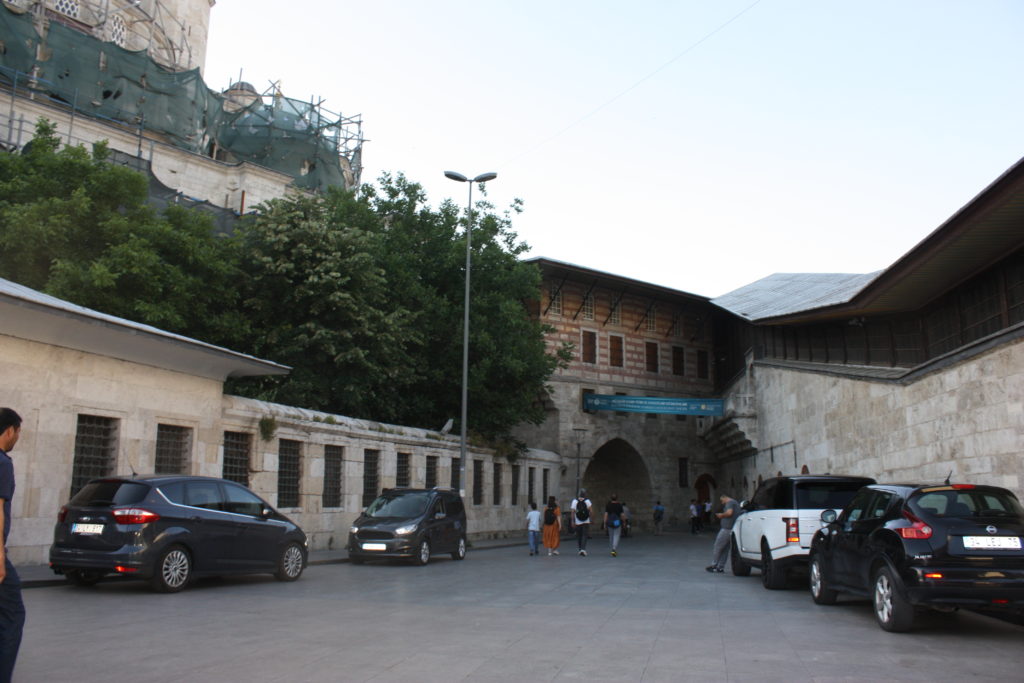

The area was initially referred to as the New Valide Sultan Mosque, but later it came to be called the New Mosque because other valide sultan mosques were also built. It is also known as the Eminönü Mosque. Its tomb is located here.
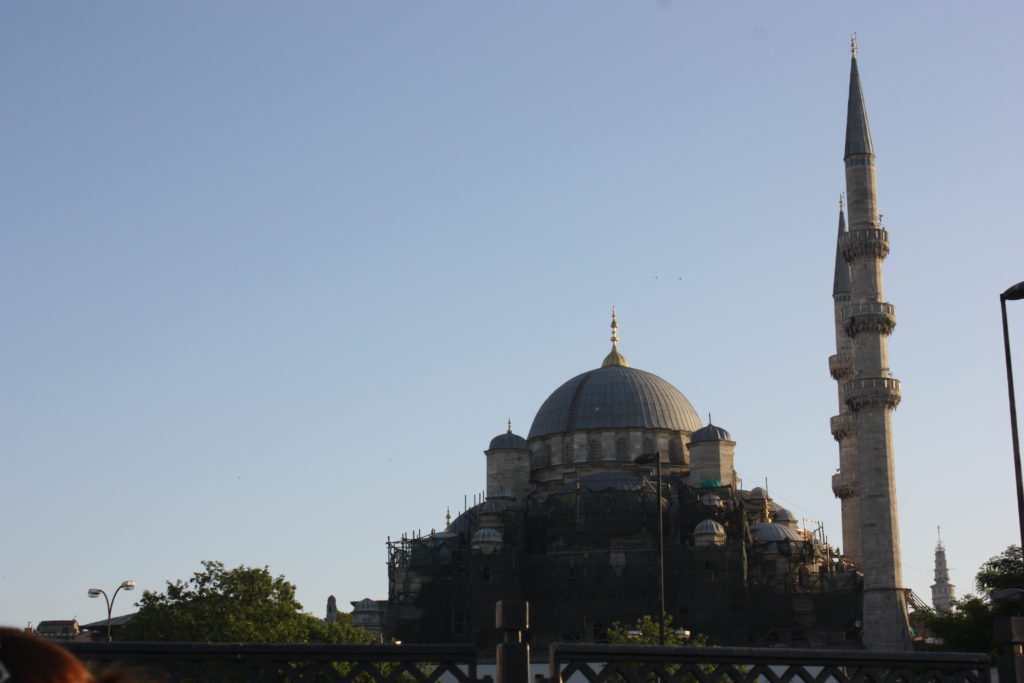
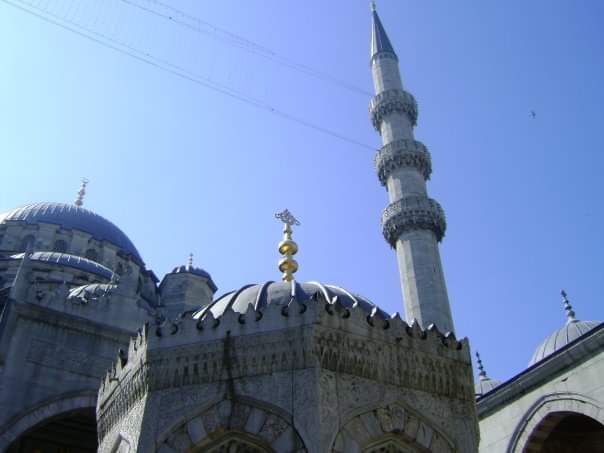
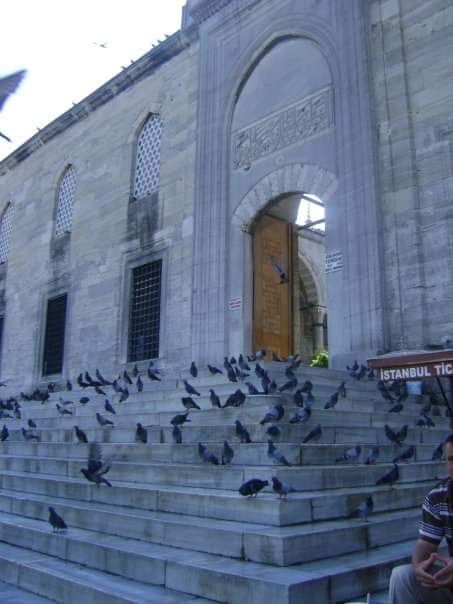
In the vicinity of this mosque, there are many birds.
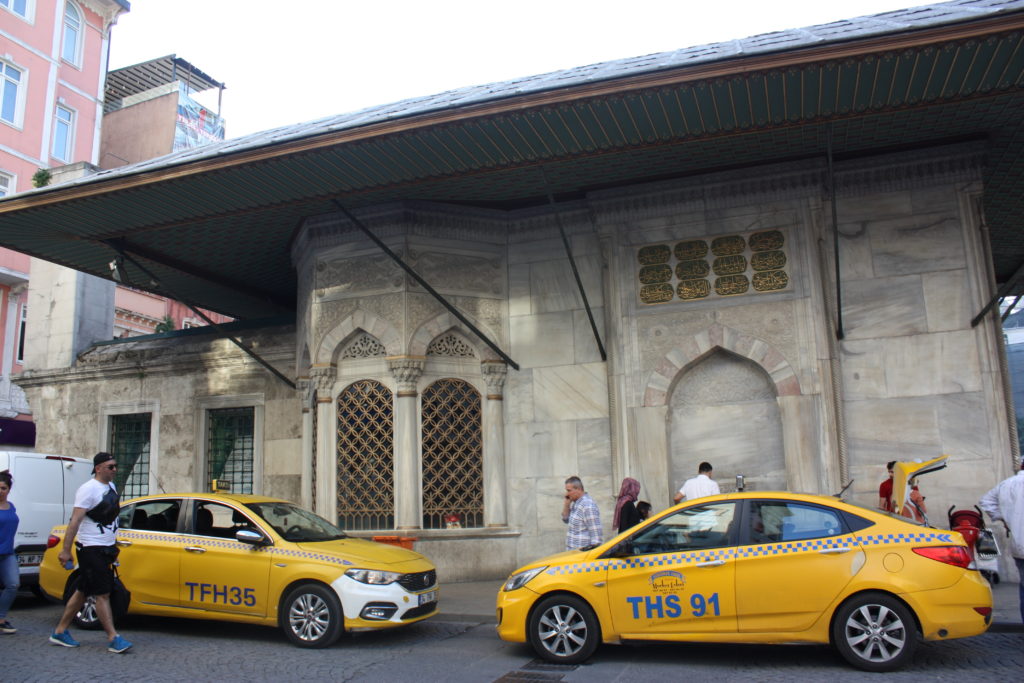
The Fountain of Hatice Turhan Sultan
Ahmed III, who again moved the palace residents to Topkapı, carried out many urban development projects during the Tulip Period. His mother, Emetullah Gülnuş Sultan, had the New Valide Sultan Mosque built in Üsküdar.

Construction of the Çırağan Palace on the shore began during this period, and his daughter and son-in-law, Grand Vizier Nevşehirli İbrahim Paşa, were among the first residents here. The huge Ahmediye Fountain in front of Topkapı Palace was built during this period.
Ottoman Structures (Stagnation Period)

The Fountain of Sultan Ahmed III
Additions were made to the Topkapı Palace. Many fountains and pools were built in Istanbul. The first Sadabad Palace was built during this period. The Neşetabad Palace was also built during this period but did not survive to the present day. The Tırnakçı Yalı in Ortaköy was built for his daughter Esma Sultan. Additionally, Esma Sultan lived in the Byzantine-era Sofia Palace. A mosque was also built for his other daughter, Zeynep Sultan.
Ottoman Structures (Stagnation Period)
Construction of the Nuruosmaniye Mosque began during the reign of Mahmud I.
During the brief reign of Osman III, who ruled for three years, a mosque built by Mahmud I collapsed, and it was named after him. According to a story, Mahmud I was thought to be dead and was buried, but sounds were heard from the coffin as it was being nailed shut.

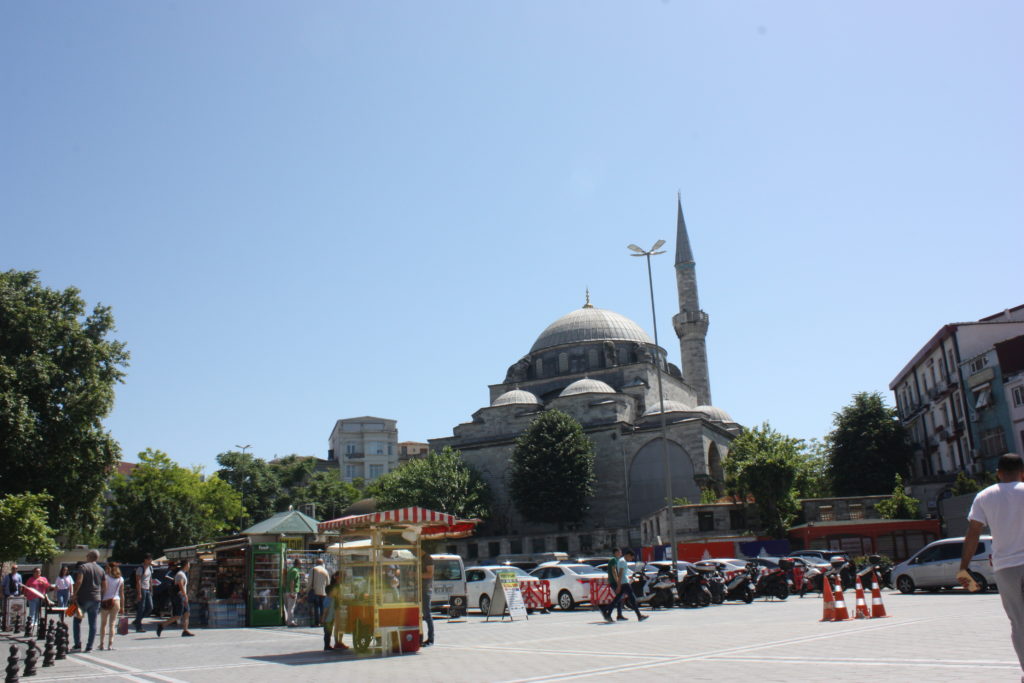
The Nuruosmaniye Mosque
Ottoman Structures (Stagnation Period)
Osman III’s tutor Lalası Laleli built the Laleli Mosque in his honor.
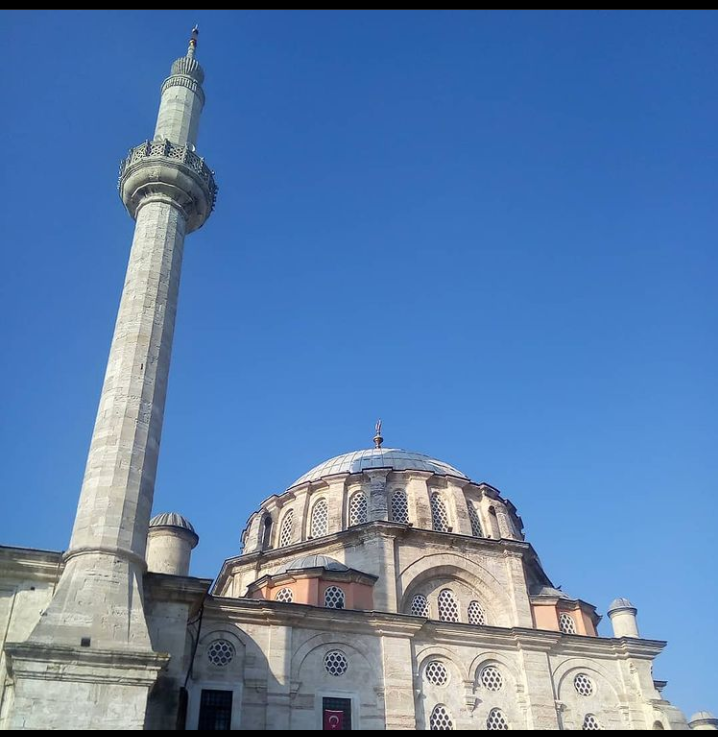
The Laleli Mosque
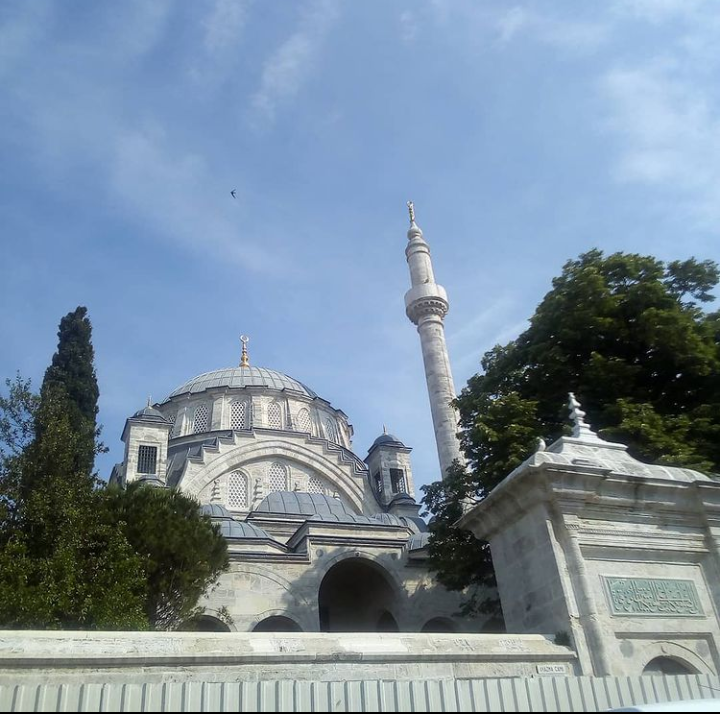
Additionally, he had the Ayazma Mosque built.
Ottoman Structures (Stagnation Period)
Abdul Hamid I built the Beylerbeyi Hamidiye Mosque. He has a tomb in his name. New pavilions were built in the harem section of the palace due to fires at Topkapı Palace, and harem life continued in these pavilions.
Selim III had the Büyük Selimiye Mosque built in Üsküdar.
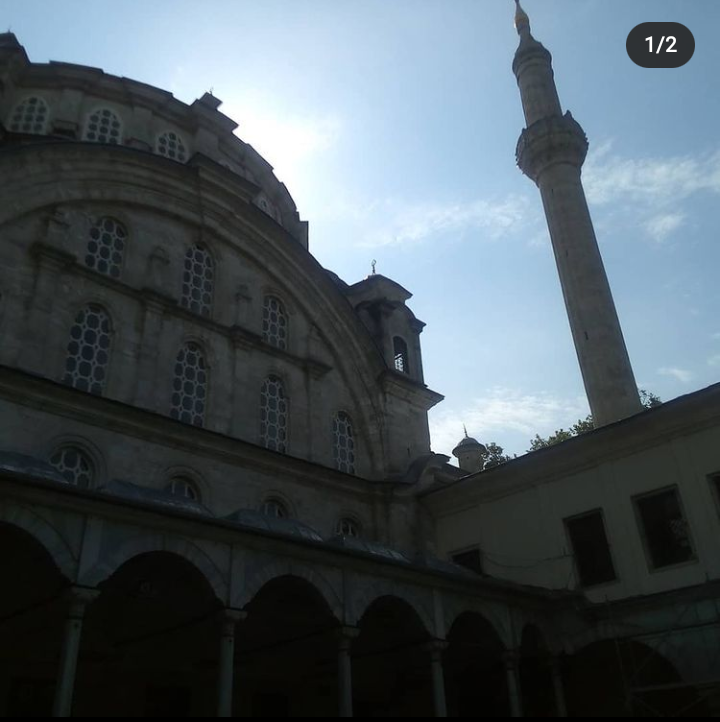
The Büyük Selimiye Mosque
Ottoman Structures (Stagnation Period)
Right next to it, the old Üsküdar Palace was replaced by the Selimiye Barracks. It is still used as a military barracks. I couldn’t take photos because photography is prohibited. Selim III built the Yıldız Palace. For a while, the Hançerli Sultan Yalı was allocated to his sisters. During the renovation of the Sadabad Palace in Selim’s period, the Tırnakçı Yalı passed from Büyük Esma Sultan to Küçük Esma Sultan, the daughter of Abdul Hamid I. The Hançerli Sultan Yalı later passed to Esma Sultan, but it did not survive to the present day. Her tomb is in the Laleli Mosque.
The Ihlamur Pavilion was built during this period and reached its final form during the reign of Abdülmecid. Yıldız Palace was built during this period and completely moved to this palace during the reign of Abdul Hamid II. Since the palace has been under renovation for as long as I can remember, I took a photo of the Yıldız Park, which is the palace’s garden.

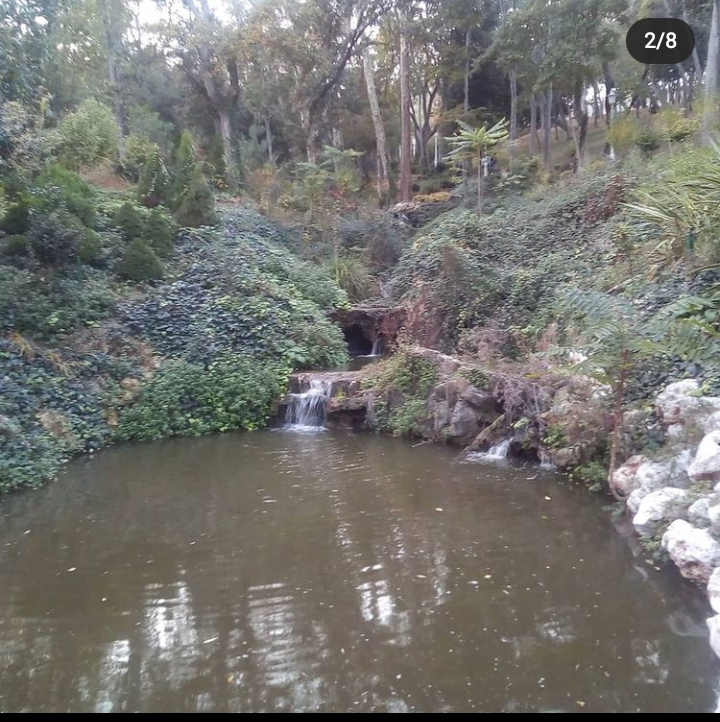
The Yıldız Park
Ottoman Monuments (Constitutional Era)
In the time of Mahmud II, the old palace was completely abandoned, and the palace residents began to settle in the Beşiktaş and Çırağan shore palaces, which were once used as summer residences. After the Kılıçali Paşa Mosque in Karaköy Tophane, the Nusretiye Mosque, also known as the Nusretiye Mosque, was built during this period.
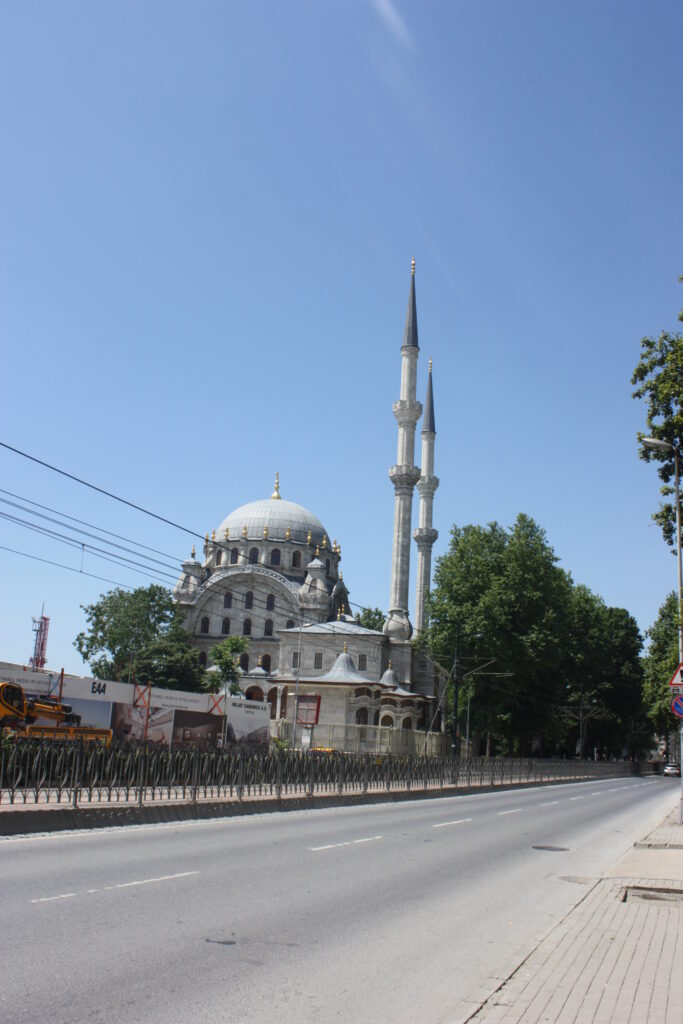
The Nusretiye Mosque
The Sadabad Palace was brought to its final form during this period, but it did not survive to the present day. The Tırnakçı Yalı passed to Adile Sultan, the daughter of Mahmud II. There is also an Adile Sultan Palace in Kandilli. Adile Sultan, before she died, bequeathed the palace to become a school. Later, it was bought by the Sabancı family and is now used as the Kandilli Girls’ High School. In the place where it was once a palace, the Tomb of Mahmud II was built.

The Tomb of Mahmud II
Ottoman Monuments (Constitutional Era)
I would like to mention some of the historic churches in Istanbul. Most of the historic churches were built in the 18th century. I want to mention here the Iron Church, which was once the third Iron Church in the world. Also, the Church of St. Mary Draperis, the Church of the Holy Trinity, and the most famous of the holy springs, the Fish Spring, in the Zeytinburnu district.
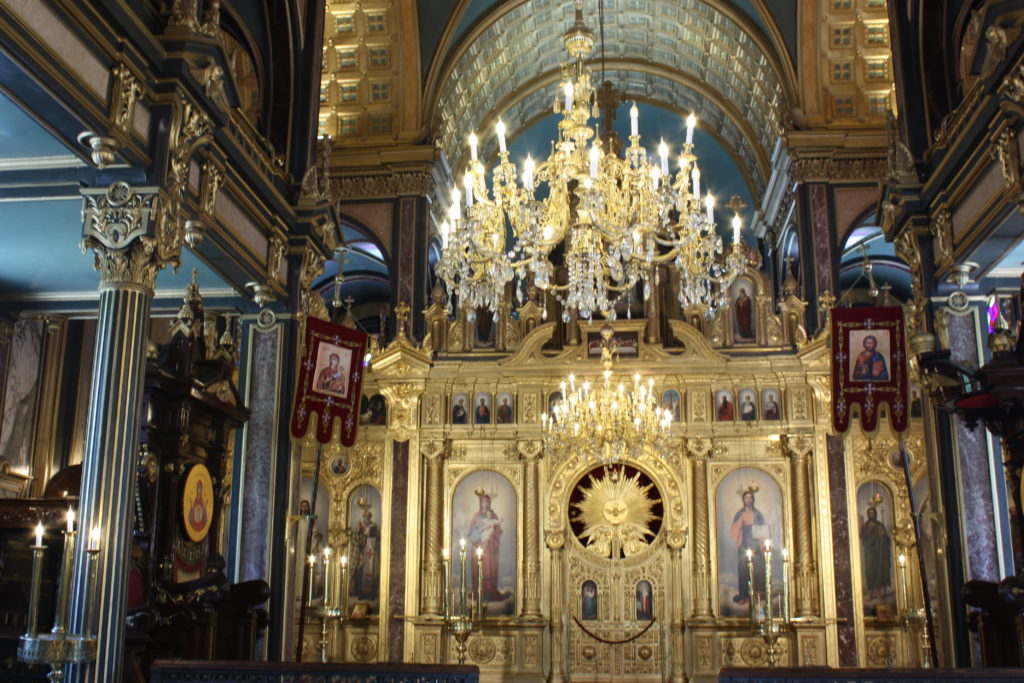
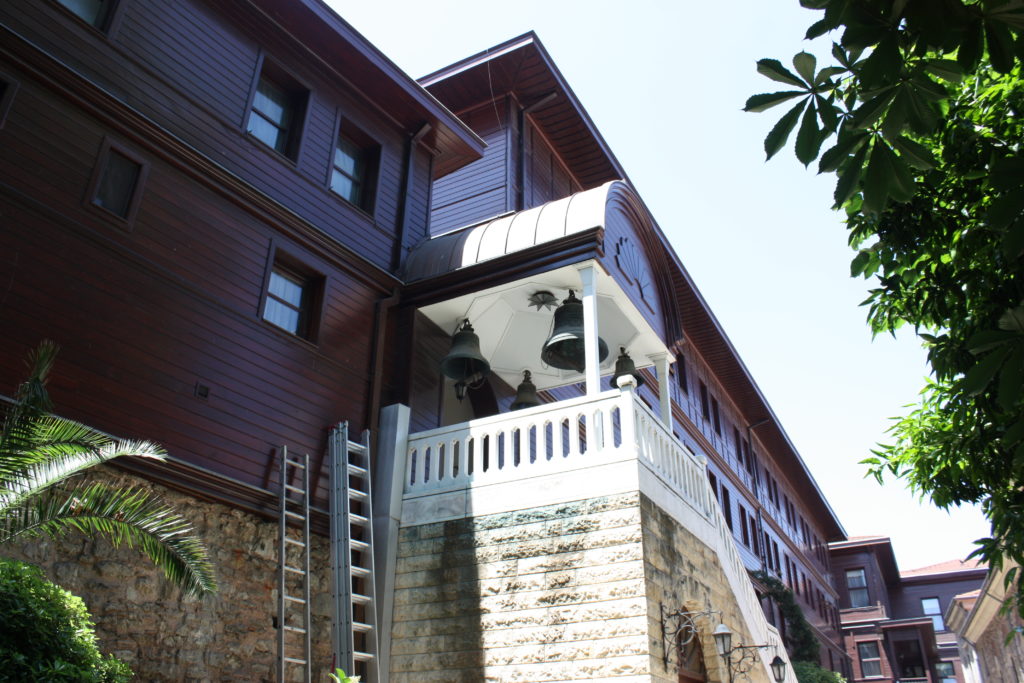

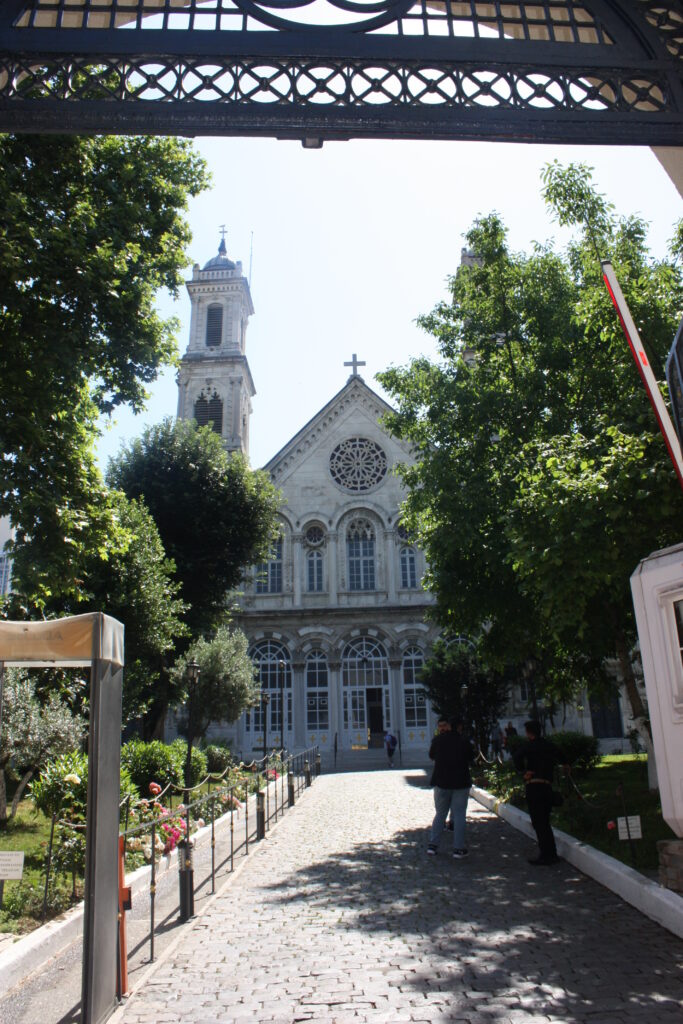

The Ortaköy Mosque, also known as the Ortaköy Mosque, was built during the reign of Abdülmecid.
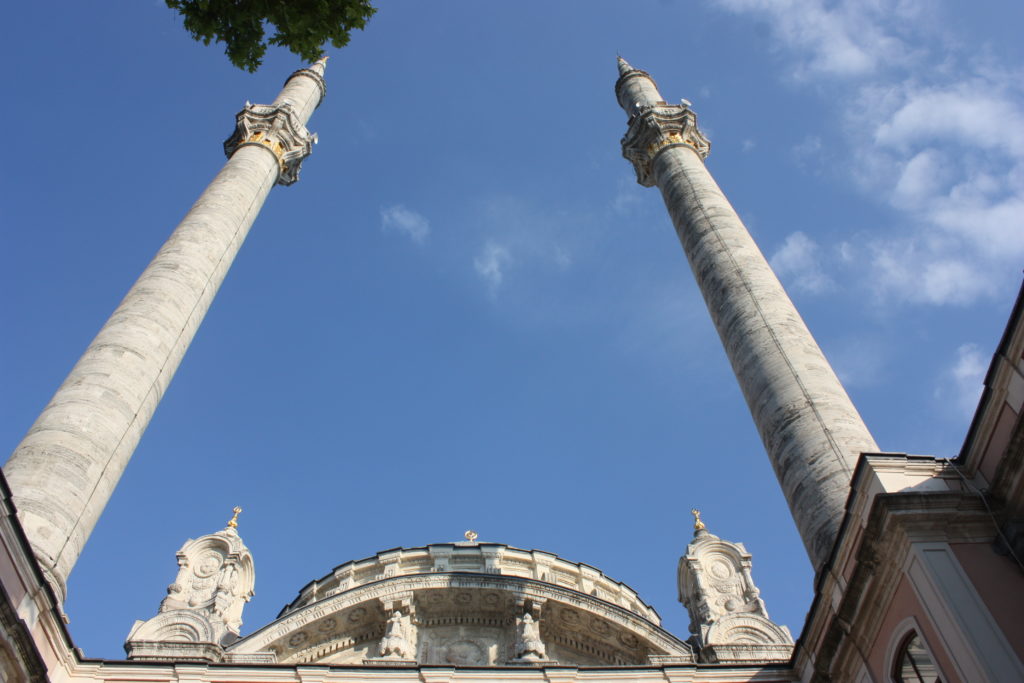
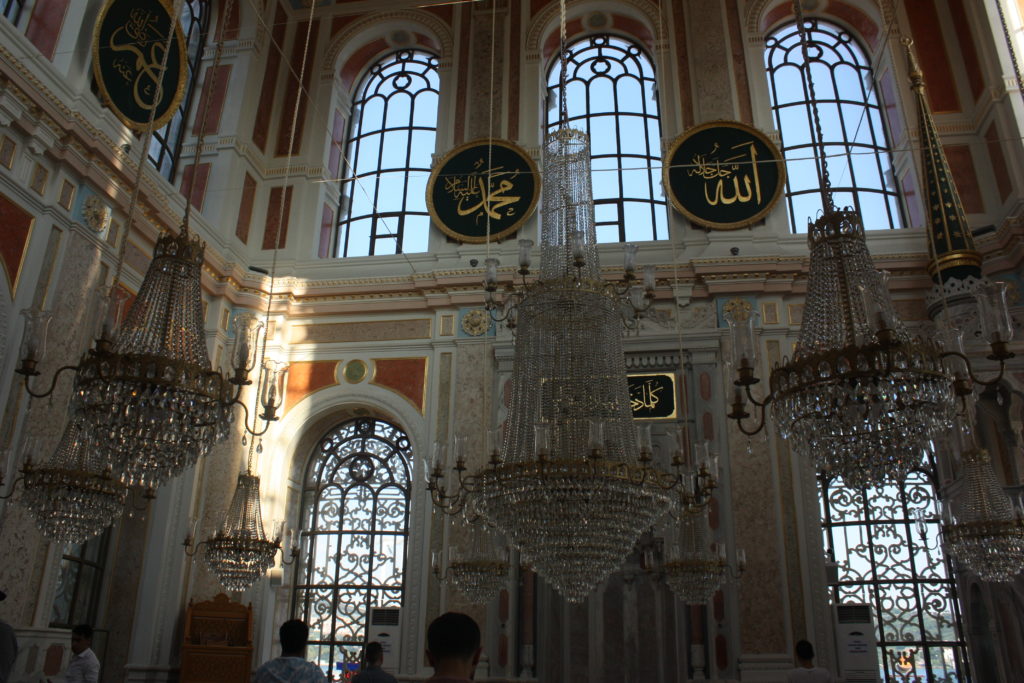
Ortaköy Mosque interior
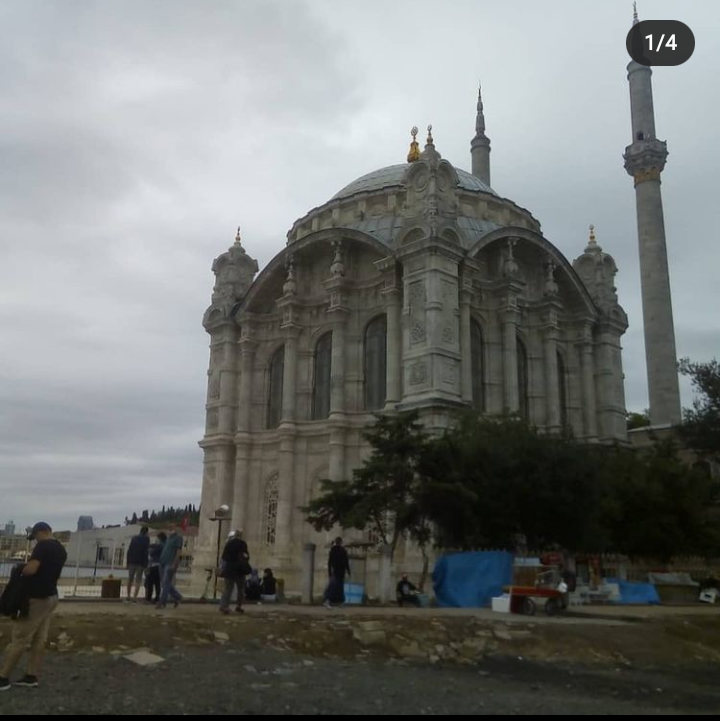
The Ortaköy Mosque

The Small Mecidiye Mosque
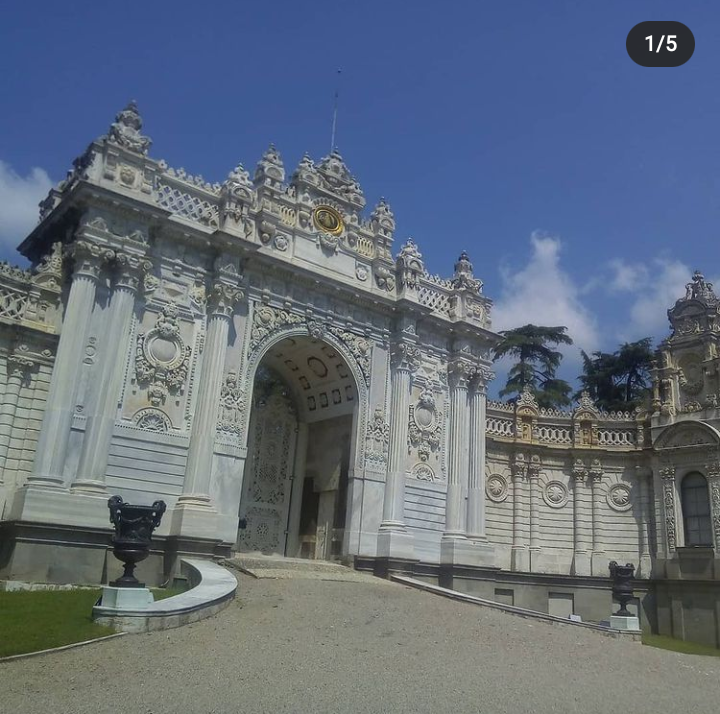
Ottoman Monuments (Constitutional Era)
Dolmabahçe Palace was also built during this period. The Dolmabahçe Mosque in front of Dolmabahçe was built by Bezmialem Sultan, Abdulmejid’s mother. However, she died at an early age of tuberculosis and could never live in the Dolmabahçe Palace. While the harem section of the Dolmabahçe Palace can be visited for free with a museum card, the salutation section is paid. The place that is now used as the National Palaces Museum was the kitchen of the palace. You can see the items used in the palace in this museum.
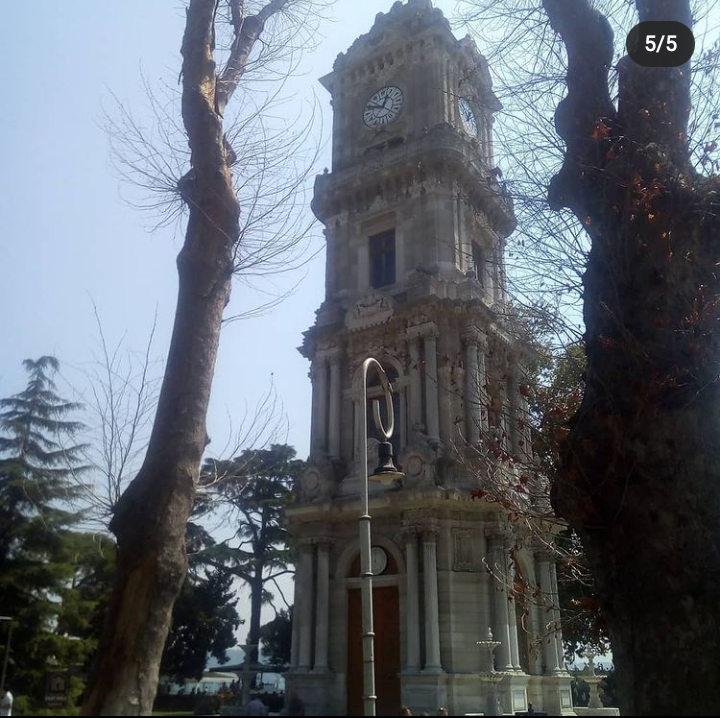
The Dolmabahçe Palace
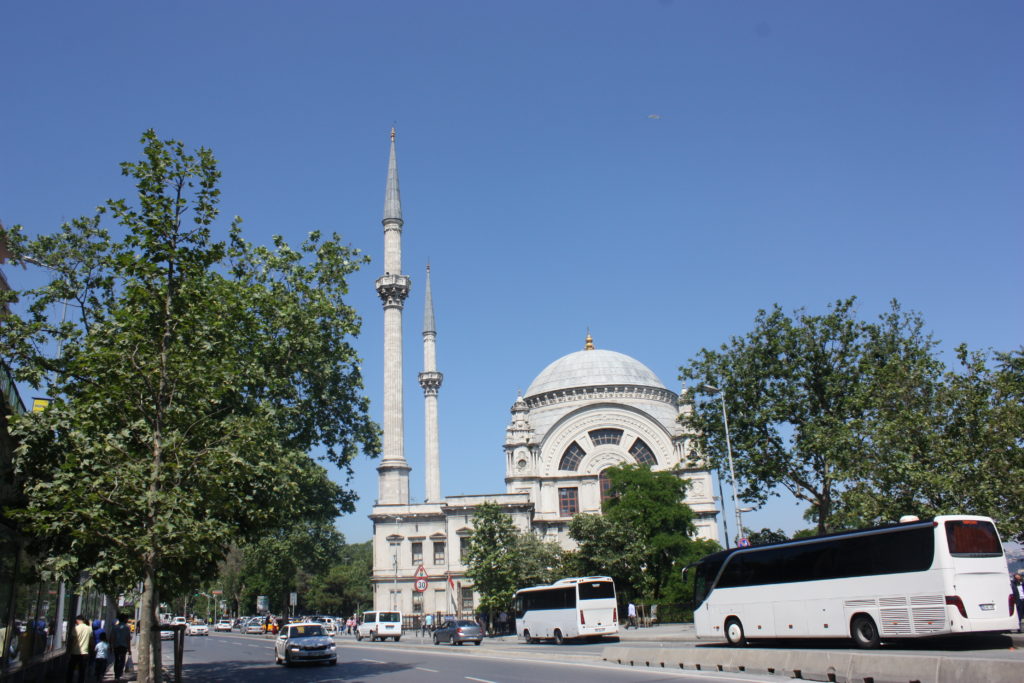
Dolmabahçe Mosque
The Küçüksu Pavilion and the Beykoz Pavilion were also built during this period.

The Küçüksu Pavilion
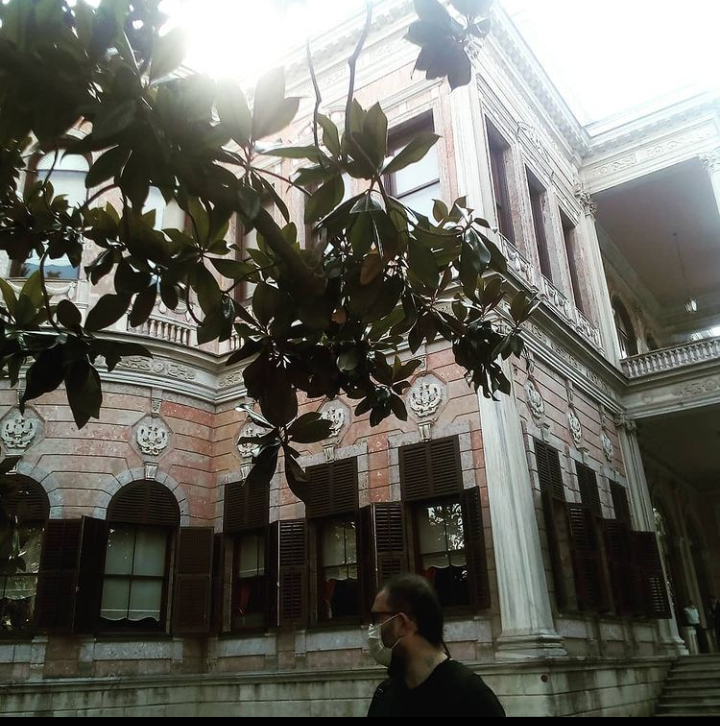
The Beykoz Pavilion
Ottoman Monuments (Constitutional Era)
The Bezmialem Foundation Hospital was built during this period. Teşvikiye Mosque was also built during this period. The Double Palaces were built for Abdulmecid’s daughters, Münire and Cemile Sultan. Cemile Sultan’s husband, Mahmut Celalettin Pasha, participated in the Abdulaziz coup with Abdulmecid’s daughter Naime Sultan and was then expelled by Abdulhamid II. The Double Palaces were also used as a parliament building. It is currently used as the Faculty of Fine Arts at Mimar Sinan University.
Mediha Sultan lived with her husband, Damat Ferit Pasha, in the Mediha Sultan Yalı. Today, the building, owned by the Sabancı family, was used as a bone hospital. Abdulmecid died of tuberculosis at the Ihlamur Pavilion.

I took the Ihlamur Pavilion a bit reluctantly.
During the reign of Abdulaziz, wonderful palaces and structures were continued to be built with debts until the treasury went bankrupt. The Çırağan Palace, the Feriye Palace, and the Beylerbeyi Palace were built in place of the old structures during this period. The Beylerbeyi Palace was used as a summer palace.
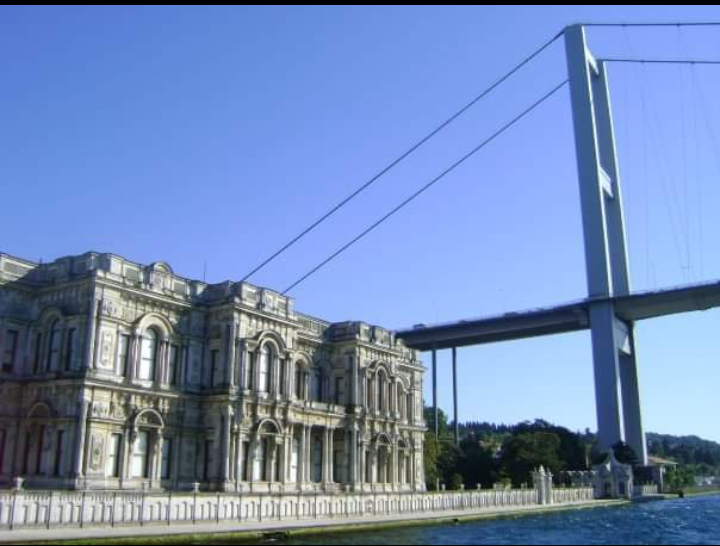
The Beylerbeyi Palace
Ottoman Monuments (Constitutional Era)
Topkapı Palace was completely abandoned and used as a place of exile, and the Çırağan Palace began to be used.
Abdülaziz’s mother, Pertevniyal Valide Sultan, had a mosque built. When descending from the Bozdoğan Aqueduct towards the Aksaray side, the mosque can be seen.
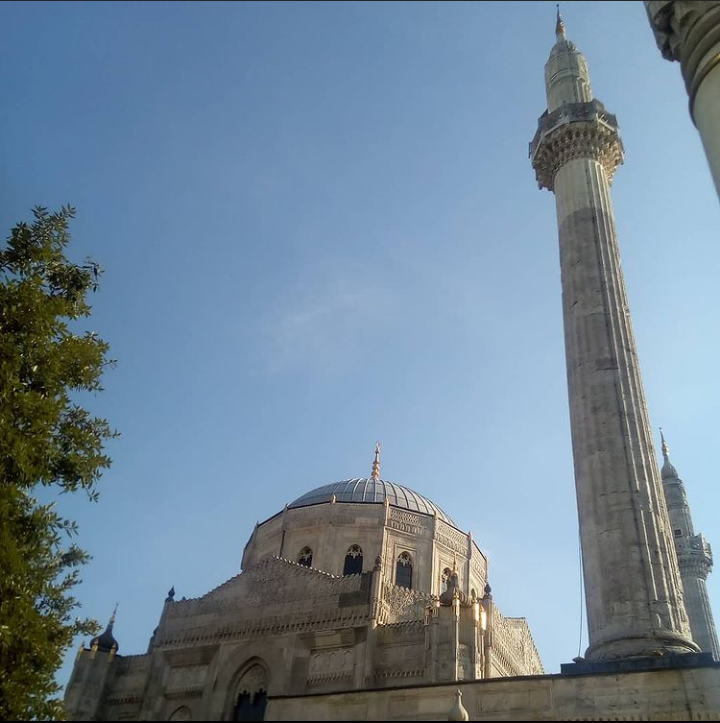
The Laleli Mosque is within walking distance. The Feriye Palace complex was used for educational purposes during the Republican era, such as Kabataş Erkek Lisesi (High School for Boys), Galatasaray University and High School, and military schools.

The Tırnakçı Yalı was demolished, and instead of a wooden building, a stone building was constructed and allocated to Abdülaziz’s daughter, Esma Sultan. The semi-ruined building next to the Ortaköy Mosque is currently, I believe, being used as The Marmara Esma Sultan, perhaps as a hotel or restaurant backdrop.
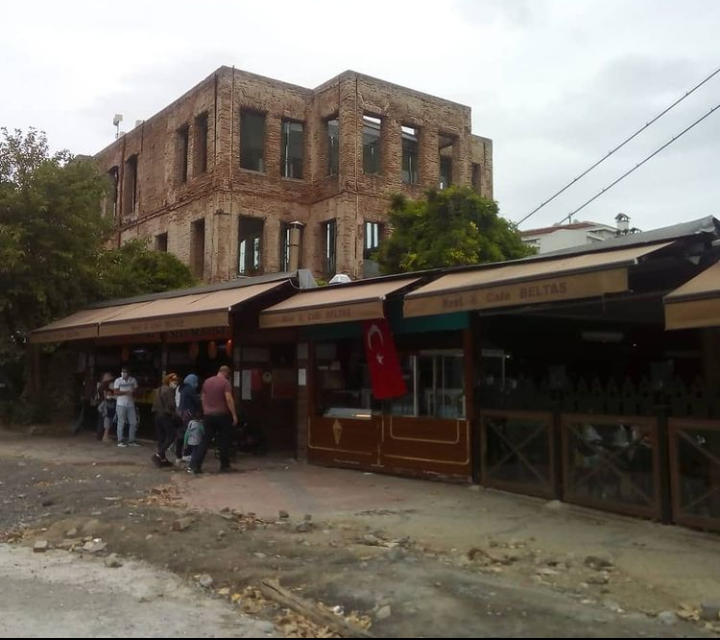
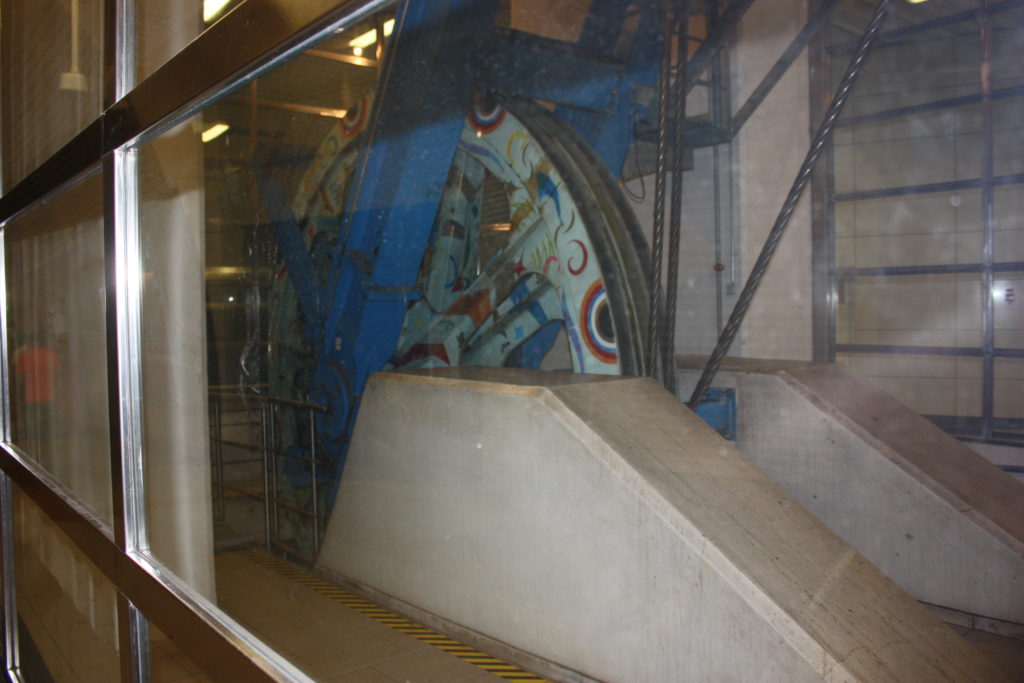
During this period, you can ride the world’s second subway through the tunnel.
Ottoman Monuments (Constitutional Era2)
During the reign of Sultan Abdülhamit II, the historic building regulating the debts of the Ottoman Empire, the Duyunu Umumiye building, was constructed. His most important achievement was the establishment of railway lines. Haydarpaşa and Sirkeci train stations were built during this period. The foundations of many institutions, including Şişli Etfal Hospital, which are currently ongoing in some way, were laid during this period. Some projects planned by Abdülhamit were implemented by Mustafa Kemal Atatürk during the Republican era. The palace was moved to Yıldız Palace during this period. Yıldız Mosque was built just outside the palace. But that palace was not one of the places to visit in Istanbul for me because during the period I lived in Istanbul it was always under renovation.


Additionally, the Hamidiye Mosque was commissioned on Büyükada. By the way, during the time I know, Yıldız Palace was under restoration, so I never got to visit it.

The Hidiv Pavilion was built during this period and perfect place to eat a fancy meal and one of the beautiful places to visit in Istanbul.
Ottoman Monuments (Constitutional Era)
During this period, Sultan Murat V was in exile in Çırağan. Abdülhamit, who married off two of Murat V’s daughters at a late age, provided them with a place near Esma Sultan’s mansion. Hatice Sultan, one of these daughters, scandalized by engaging in a forbidden love affair with Kemalettin Pasha, the husband of Abdülhamit’s daughter Naime Sultan. It is said that Murat V was deeply saddened by this incident and that it hastened his death. The mansion is known as Hatice Sultan Mansion. However, it has been under restoration for years and can only be observed from the outside. The mansion allocated to Naime Sultan, whom Abdülhamit considered lucky for being born on the day he ascended the throne, still stands, albeit semi-ruined. After being dethroned, Abdülhamit continued his exile first abroad and then in the Dolmabahçe Palace.
Sultan Reşat did not mourn the burning of the Çırağan Palace because of the bad things that happened during his reign. The Çırağan Palace, rebuilt by the private sector during the Republican period, is now used as a hotel. His tomb is in Eyüp Sultan.
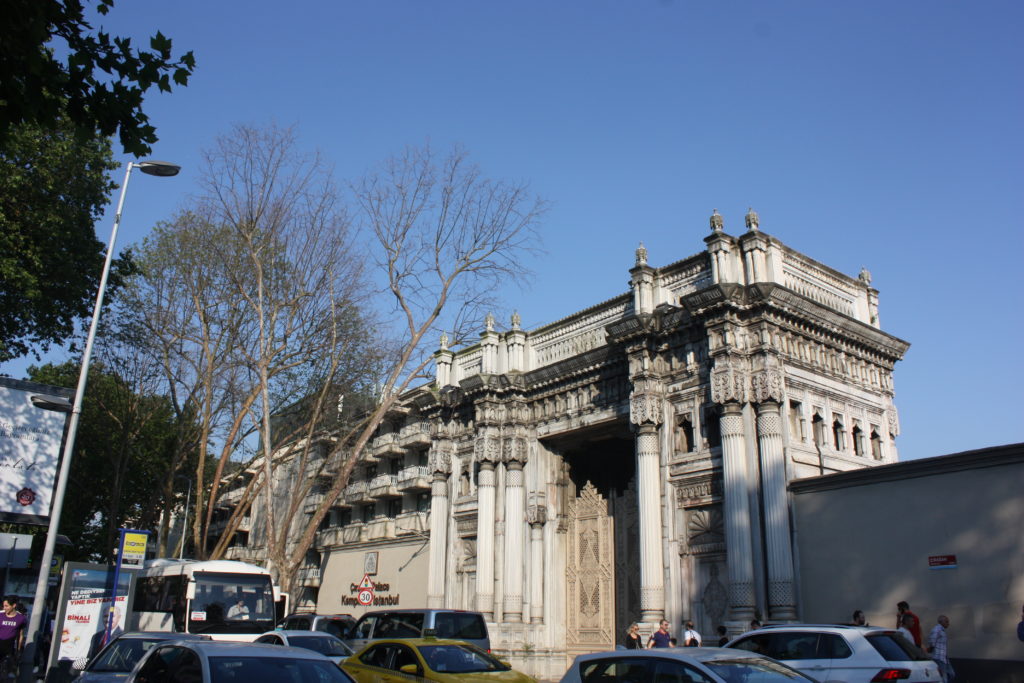
The Çırağan Palace
In Istanbul, you can find some of the works mentioned here and some other pre-Ottoman works from this route.
